|
Versailles Part Two: Marie
Antoinette |
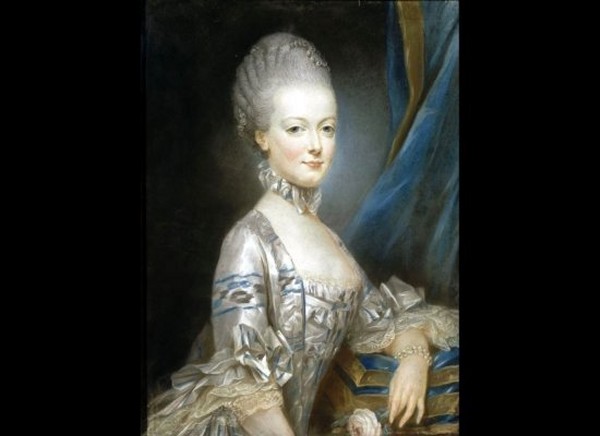 |
|
Story written by Rick Archer
May 2014
Rick Archer's Note: Welcome! I assume you have
read Part One which covered the story of my visit to
Versailles with Marla.
Part Two
is the incredible story of Marie Antoinette. Let me
alert you right now that you will absolutely drop your jaw
at the story of Antoinette and the Necklace Affair.
It is one of most interesting stories I have ever run
across.
Before we get to
the Necklace Affair, I will take you through some of the
historic events that led up to the French Revolution and the
tragic executions of Louis XVI and Marie Antoinette.
However, if you can't wait, click
Necklace Affair and go straight to the story.
|
| |
|
The
Seven Years War - The French and Indian War
|
Not many Americans realize the American Revolution essentially laid
the groundwork for the French Revolution. Our Independence
would cost King Louis XVI his head... which is pretty sad
considering the same man won the war for us.
Many historians
point to the Seven Years War as the beginning of the long march to
the French Rebellion. Considering Louis XVI was all of
2 years old when the war started, it is safe to assume he
was not responsible for this particular war. Instead, responsibility
for the Seven Years War can be laid at the footsteps of Louis
XV, the do-nothing king.
The Seven Years War
actually began in North America.
Once the greatest power
in Europe, Spain never regained its glory following the defeat of
the Spanish Armada in 1588. Having superseded Spain, France and
Britain were now engaged in an intense global rivalry.
The main battle ground was North America. France and Britain went
toe to toe as the leading colonial powers in North America. Hoping to
establish supremacy, both countries were engaged in hostilities
throughout
North America.
By the mid-1700s, French colonies in Louisiana,
Illinois, and Canada had largely surrounded the British colonies
concentrated along the Atlantic coast. All the French needed to
totally stop the Colonies from further expansion was to gain control of the Ohio Country
near the Great Lakes plus a heavily-disputed "no man's land"
stretching north from the Gulf to Ohio.
The fighting
took place in Quebec, Montreal, Pennsylvania, Ohio, New
York and the Great Lakes. While Great Britain
had the support of the American colonies, France had built a
complex system of alliances with the area's Native American tribes.
The Indians had every reason to join the fight due to the rage they
felt at being displaced from their homelands at every turn.
Since the British
American colonists fought on the side of the British and because the
French and the Indians were on the other side, the American version
of this struggle is called the French and Indian War.
However, to the French, the North American battle was a part of their Seven Years War.
The war began
after a dispute near today's Pittsburgh area of Pennsylvania.
The dispute erupted into violence in May 1754, during which
Virginia militiamen under the command of 22-year-old George
Washington ambushed a French patrol.
This skirmish would soon
turn into a battle of nations.
France had the upper hand at first. The disastrous
British campaigns of 1757 included a failed expedition
against Louisbourg (Nova Scotia) and a French victory at the
Siege of Fort William Henry (central New York state).
Then something terrible
happened. After the British surrender at Fort William Henry, they
yielded their arms to the French.
At some point Louis
Montcalm, the French commander, lost control of the
Indians. To the horror of
the French onlookers, the Indians proceeded to torture and
massacre countless helpless British victims.
This massacre included the savage practice of scalping. The death toll has been
estimated at between 200 and 1500 men (and women and children).
The events of this
massacre were detailed in James Fenimore Cooper's classic
Last of the Mohicans. It was a brutal slaughter to be
sure. The French had been worried about their limited control
over the Indians due to the language barriers. However, the French never
anticipated a disaster of this magnitude. The French
intervened where they could, but much of the killing was done
because
the French were outnumbered.
The
British government in New York collapsed after the loss of
Fort William Henry,
but the war was not over. Not by a long shot. Indeed, this marked the turning
point in the war. The outraged Prime
Minister William Pitt used the slaughter to persuade the
British Parliament back in England to
increase British military resources in the colonies.
It was time to
"teach the French a lesson in how civilized countries conduct
warfare".
William Pitt also had a
trick up his sleeve.
His move to increase the
effort in North America came at the exact same
time when France was unwilling to risk the
necessary aid
to the limited forces it had in New France, aka Canada.
In other words, Britain's efforts were expanding as France's efforts
decreased. Any why was that?
William Pitt
had succeeded in persuading Prussia (Germany) to enter the war
against France.
France was suddenly
forced to fight a battle on two fronts at once. France
had no choice but concentrate its best forces against dangerous Prussia in the European theater of the war.
Although France was able to at least neutralize Prussia, they were
badly outnumbered and decimated in North America.
Between
1758 and 1760, the British military successfully penetrated
the heartland of New France and took control of Montreal in
September 1760. The war would be over soon.
It had been a
brutal fight, but in the long run France never really had a
chance. Once Britain got Prussia into the war, France
could not afford to match the overwhelming British presence in North
America.
In retrospect, it
doesn't seem like a fair fight. Great Britain had the complete
loyalty of the American colonies. Everyone spoke the same
language and fought a common enemy.
France had far fewer
troops plus allies that they could not trust, control or even speak
to most of the time. In other words, France never had much of
a chance. So why were they fighting?
Britain now held
the supreme position as the dominant colonial power in
North America.
What a colossal defeat.
France had lost all of its possessions in North America to the British.
Even more important, for its troubles, France finished the war with very heavy debts,
which they struggled to repay for the remainder of the 18th century.
The blame for this ill-considered blunder was placed directly at the
feet of King Louis XV, but he didn't take the blame. Instead
he blamed his ministers. Why did no one foresee the entrance
of Prussia into the war? One would assume someone would have
had the sense to anticipate the move by predatory Prussia.
Louis XV may have had a
point. Or for that matter, why didn't anyone realize that
counting on the Indians to win the battle against the unified
British and colonists wasn't the brightest idea either.
Considering the North
American fight nearly
bankrupted the nation, it was an incredibly stupid move for
France to be involved in a widespread battle in the first place.
France never had the resources in the New World to have a fighting
chance.
The King was a weak personality
who was easily manipulated by his
advisors and confidants. Believe it or not, Louis relied on
his mistress, Madame Pompadour,
to make many of his military decisions. No doubt that women
are just as shrewd and
cunning as men. However one can ask the extent of Mme
Pompadour's military training prior to offering her thoughts.
Considering the enormous influence
she exercised over appointments and
matters of grand strategy, one can wonder if the proverbial Battle of the Sexes
was sufficient training to
plan military strategy in the Battle of the Nations.
On the other hand,
considering the frequency with which Louis XV changed ministers, Mme
Pompadour may have been the best advisor he had.
Other advisors rose and fell with rapid
succession. This revolving door continued the lack of the stability which had
also plagued
the monarchy of Louis XIV. The serious leadership vacuum cost
France the war.
Oh well, c'est
la vie.
France pretended to attach little value to its North
American losses. Philosopher Voltaire wrote that Louis XV
had lost "a few acres of snow" (Canada). So
what?
Secretly
however, France was not in a philosophical mood. King
Louis XV absolutely seethed over the military defeat to its
worst enemy and the financial burden of the war.
Naturally the
French were extremely bitter towards Great Britain. And if it
is one thing the French are good at, it is holding a grudge
against its military enemies. Ask Germany.
|

In the French
and Indian War, France lost all of its holdings in North America.
Take a look - the area once controlled by France was
equivalent to at least three Frances... and they lost it all.
Napoleon
briefly regained Louisiana from Spain, but then he turned around and
sold it to Thomas Jefferson (Louisiana Purchase 1803).
It was Napoleon's idea to sell;
he needed money to pursue his conquests in Europe. Plus
Napoleon doubted he had the manpower to hang onto it for long.
Why not sell it while he could??
The Last
of the Mohicans
Notice
the unarmed men in the background. Here a
French officer tries to restrain the Indians from attacking
unarmed British soldiers
Celebrating the French victory at Carillon, 1758. This
would be one of the last victories for the French to celebrate.

Once
Prussia attacked France in the Seven Years War, this forced
France to lose its focus in its North American French-Indian Battle
and defend its European interests instead.
|
| |
|
The
Great French Tragedy
|
|
|
|
When Louis XVI
came to the throne in 1774, he was only 19 years old. France
was just beginning to recover
financially from the Seven Years War that had ended 11 years earlier.
To be honest, no
one had ever expected young Louis to be in this position. As a potential King, Louis XVI had been a
total afterthought. He only became King due to the
tragic death of his father Louis (confusing, isn't it?)
Let's clear this
up. Louis XIV was father of Louis XV. Louis XV was
father of Dauphin Louis. Dauphin Louis,
the father of Louis XVI, had once been the direct
heir to the throne.
Dauphin
is the title for the eldest son of a king,
i.e. "the king in waiting"). Dauphin Louis had been groomed from
birth to take the place of his father, King Louis XV.
A handsome,
strapping man, Dauphin Louis was in many ways the exact opposite of
his womanizing father. A devout man with a keen
sense of morality, Louis was very much committed to his
wife, Marie-Josèphe, as she was to him.
It was now 1765.
At age 36, Louis had five children of his own. He was
extremely popular in France. The entire country
eagerly awaited the rise of this handsome, clean-cut Prince
to the throne. Then suddenly Dauphin Louis fell sick. He had
smallpox, the scourge of Europe in that day. Louis
died quickly.
France was in
shock. The pain from the loss was nearly unbearable.
To see a man who was so vibrant and held so much promise
simply die without warning made no sense. The cruelty of
the loss left the country in despair. His parents were heart-broken.
The Queen mother turned to the church for solace while his father the King took solace in the arms of
his
mistress.
Meanwhile Louis
XVI had it even worse than that. He was 11 years old
when his father died.
To this point, he had received little of the rigorous
training that his father had received. No one ever
expected his vigorous father to be taken so suddenly, so the
boy had not been groomed at all for the responsibility.
In fact, no one in the
French court had ever paid much attention to Louis XVI. Louis had always been a shy,
reclusive boy. This temperament would not change much over the years. There was nothing wrong with him. He was
bright and he was healthy. His only problem is that he had
never received much tutelage.
Boys were
supposed to grow up fast in those days. Just five years
after his father's death, Louis XVI was married to Marie
Antoinette. He was 16. Four years later he ascended to the
throne in 1774. At age 19, Louis was completely overwhelmed
by his responsibilities.
Costigan, our
guide, pointed out that the
neglect of the Kingdom during the 60 year reign of Louis XV
had forced his unprepared grandson to face an entire series of huge
problems.
Costigan
explained that
Louis XVI was not a bad man at all. In fact he was a
huge improvement on the previous two kings. At
least he cared about his job. His problem was that he just wasn't very good
at it.
Louis was bright enough
to be a ruler, but as a teenager taking the throne, he lacked confidence.
That makes sense. How many teenagers can remember to
brush their teeth much less know the right path to take on
complex issues?
So, at the
start, rather than
take the reins himself, the son allowed far too many affairs to be
handled by his ministers. Not surprisingly, these were men who didn't always pursue the
best interests of the state but rather what was in their own
best interests instead.
|
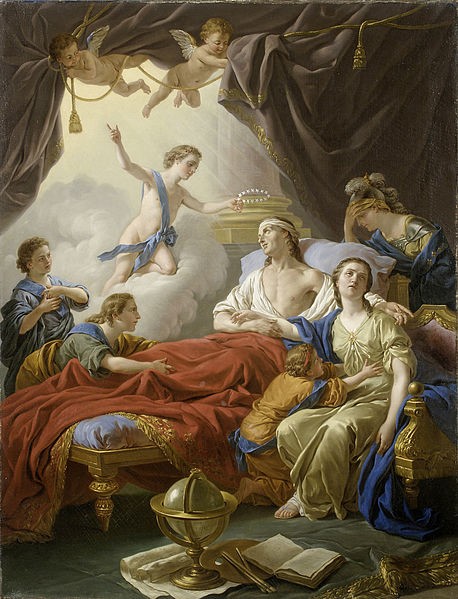
The great
tragedy of France - the handsome prince dies young.
Had this talented man lived to become King, France might
still be a monarchy today.
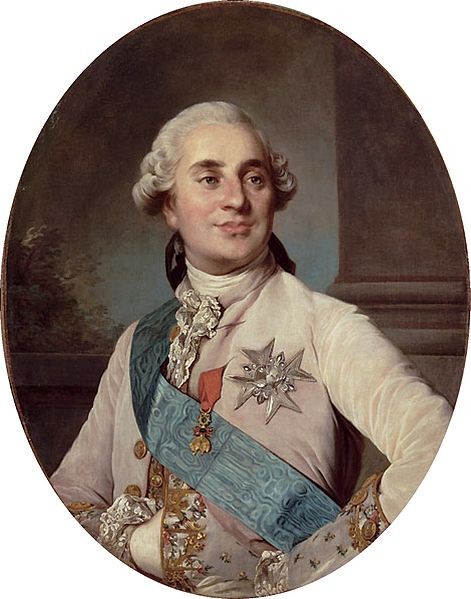
King Louis
XVI at the age of 20 |
|
|
|
Louis XVI and Marie Antoinette
|
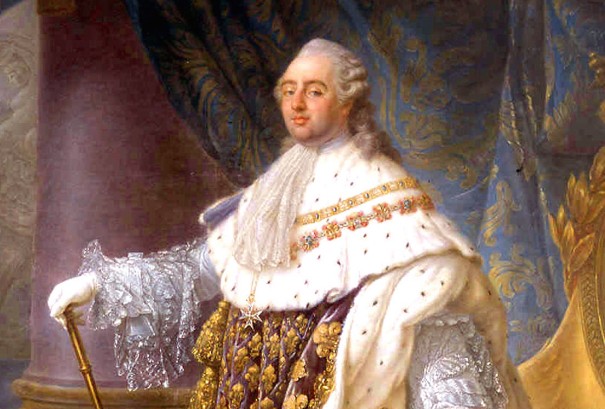
King Louis
XVI (1754-1793), House of Bourbon |
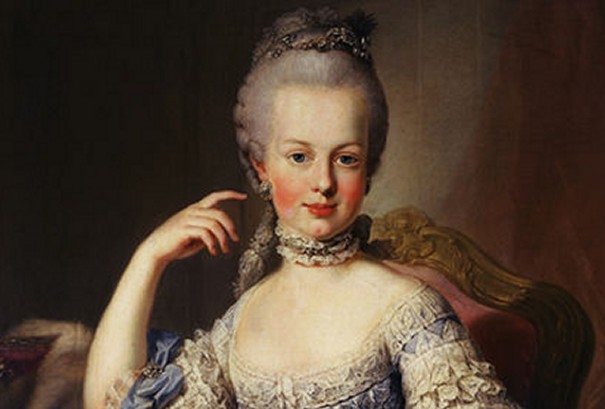
Marie
Antoinette (1755-1783), House of Habsburg |
| |
|
The Embarrassment of
Louis XVI
|
Costigan told us
an anecdote that quietly spoke volumes over just how
ill-prepared for life this young man really was.
Costigan had us laughing in stitches over the
sexual problems
between Louis XVI and his wife Marie Antoinette.
However, now that I know more about his life, I feel guilty
for laughing.
Marie Antoinette
was the daughter of Queen Maria Theresa of Austria, the
so-called Godmother of Europe. Queen Maria Theresa had
16 children! And she married every single one of them
into pairings that were politically advantageous to Austria.
Marie Antoinette
was a perfect example. Antoinette was only 10 years
old when her mother arranged for her to wed Louis Auguste of
France. This was a carefully orchestrated union that
would join the Austrian Hapsburgs and the French Bourbons.
Five years later, the couple wed in May 1770. The
ceremony and ensuing celebration had all the trappings of a
lavish royal fête.
At Versailles, custom permitted the
king's courtiers to accompany the newlyweds to their
bedroom, where they reposed on display. The gaze of the
attendants did little to
stoke the fires of passion of the newlyweds. Apparently nothing happened.
Things didn't get any better. Both of
them were so young (16, 15) plus neither of
them had any previous experience.
It
doesn't appear Louis had much of a sex drive either. As
months
turned into years, Louis showed little interest in sex.
Marie Antoinette
was frustrated. Antoinette would go hide on the toilet
for privacy and write letters to her mother asking for advice. She
told her mother she was
willing and able to receive her husband sexually, but the
man wouldn't pursue her.
Antoinette lived in a state of anxiety that her
husband
would never warm up to her and that she'd be sent home to
Austria as an utter failure. She would be a
laughingstock, the woman who could not inflame her King to
passion.
The domineering
Queen of Austria reminded her daughter of this danger at every possible
juncture in their correspondence. She wrote to Marie
Antoinette to "lavish more caresses" on Louis.
What's more, it
was painfully clear to all of France that something was wrong
with the couple. The stakes were high. France was waiting for Marie
Antoinette to produce an heir to the throne. It didn't
help matters that the
French press had a field day speculating what might be the
problem.
The prevailing
thought was that Louis was impotent. News of Louis'
impotence spread from the court of Versailles to the streets
of Paris, where pamphlets mocking his powerlessness were
distributed. The propaganda planted the notion that if Louis
couldn't perform in the bedroom, he certainly couldn't
perform on the throne.
This public
disrespect of the King was a dark omen because it emboldened
the press to go much further in later years. The lack
of respect for the Royal couple allowed deliberate lies to
spread among the people unchecked. The best example,
of course, was the infamous "Let them eat cake", a phrase
incorrectly attributed to Antoinette. However, the
public didn't know that. They believed the lies which
led to the executions.
Meanwhile,
King Louis XV, grandfather to Louis, watched in abject horror.
There was a four-year window between the 1770 royal wedding
and the 1774 death of Louis XV. During this time,
Louis XV, the sexual lion who had probably had sex with
every woman in France at some point during his 60 year
reign, could not believe the inadequacy of his grandson.
Here he was,
Louis XV, the
man with his
rapacious sexual appetite and his insatiable mistress, Madame du
Barry, and this pathetic King XVI. How was it possible
that a grandson of his could fail to execute a mission that
came so effortlessly to him (and he had 40 children to prove
it)?
Believe it or
not, the problems of the Royal Bed reached the level of an
international crisis. A 2002 article in the
Guardian had this to say about Louis and Marie:
Concern at
the failure to consummate a marriage, essential for a
military alliance between the Bourbons and Hapsburgs,
was a matter of recorded clinical analysis from the
first weeks.
By 1772,
Louis XV, notorious for his love life and generous
genitalia, tackled his grandson, a virgin at marriage,
about his barren union. Louis, then 18, told him that he
had tried several times to deflower his wife 'but was
always stopped by painful sensations'.
A year
later, Louis achieved what was called a 'demi-succès',
telling his grandfather that Marie-Antoinette was now
'my wife' after a rare night in the same bed. But she
was still considered a virgin in 1777 when Austria's
Joseph II, the queen's older brother, came to France to question the
couple about their failure to produce an heir.
The
Austrian ruler then wrote to his brother Leopold to say
that the French king, who succeeded to the throne in
1774, 'had well-conditioned, strong erections and
introduced his member, stayed there for two minutes
without moving, withdrew without ejaculation, and then,
still erect, wished [his wife] good evening. He should
be whipped like a donkey to make him discharge in
anger'.
The Guardian
article reviewed the list of theories for the continued
failures. The first
theory was that Louis was impotent. The next theory
was that Louis was gay. The next theory said that
Louis had a condition known as 'phimosis' which made it
painful to have an erection. Rumor has it that Louis refused to
undergo the painful surgery necessary to correct the problem
(there was no anesthetic in those days).
The Guardian
article said the newest theory was that Louis was simply
"too large" and Antoinette was "too small" to receive him.
Another
fascinating Guardian tidbit was the possibility
that Louis was too inexperienced to understand that sex
required more than simply inserting the penis into the right
place.
Doesn't it seem
preposterous that 250 years later people still
investigate the sexual problems of the mismatched couple?
The one thing
that everyone seems to agree on is that it was the
intervention of Marie's brother Joseph that turned the tide.
Whatever the
problem, the solution came when Austrian Queen Maria Theresa lost
all patience. She sent her son Joseph to assess the
damage. Mind you, Joseph probably had better
things to do than intervene in his sister's love life.
He was, after all, the Holy Roman Emperor at the time.
However, no one said 'no' to his powerful mother, so off to
France he went.
Joseph took
Louis, poor plump awkward Louis, into the garden and asked
the young man what the hell was
wrong. At the end of the conversation, Joseph gave
Louis some advice - "Put your back into it, kid".
In other words, push harder, stay longer.
He called them
"two complete blunderers" and surmised that nothing else
stood in their way of consummation.
Joseph's advice
worked wonders. Louis got the
message. Even if it hurt him or hurt her, screams,
pain and all, he had to stay the course till something
happened. It was his
duty!
Sure enough, not
long after Joseph's visit, Marie Antoinette was indeed
pregnant. It had taken them 7 long years to have their
first child, but they would go on to have four children.
Fascinating stuff.
|
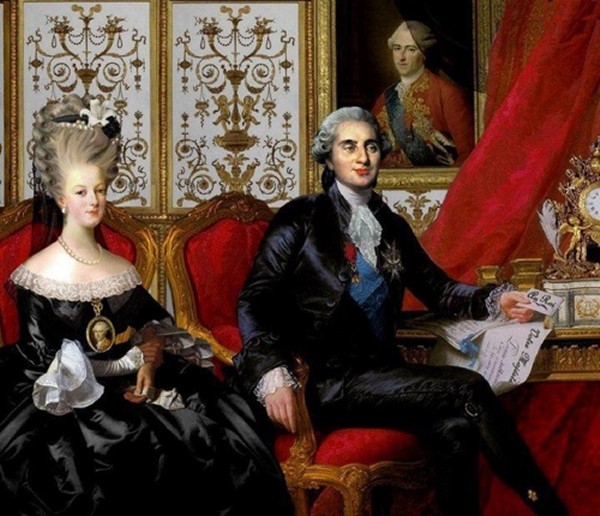
Marie
Antoinette and Louis Auguste were without a doubt
the most star-crossed royal couple since Antony and Cleopatra
We
have heard about the French Kings and their mistresses.
Not this King. There is no record of him having a
mistress. In time, he grew very fond of Antoinette.
There was little passion, but the two definitely came to
care about one another.
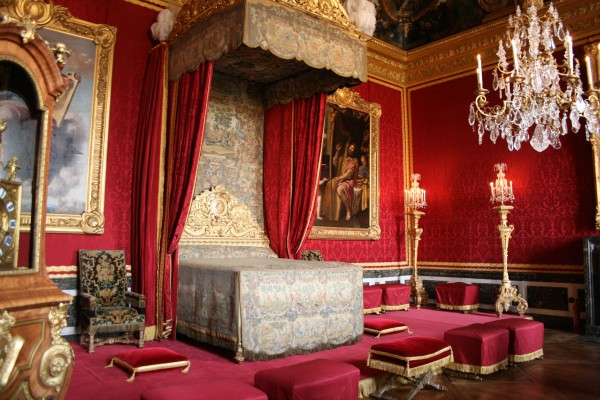
On
their wedding night, Louis and Marie were forced to get into
bed together with attendants posted to watch to make sure
they consummated their marriage. No details have
emerged, but it seems likely Louis failed in his task... as
would most men.
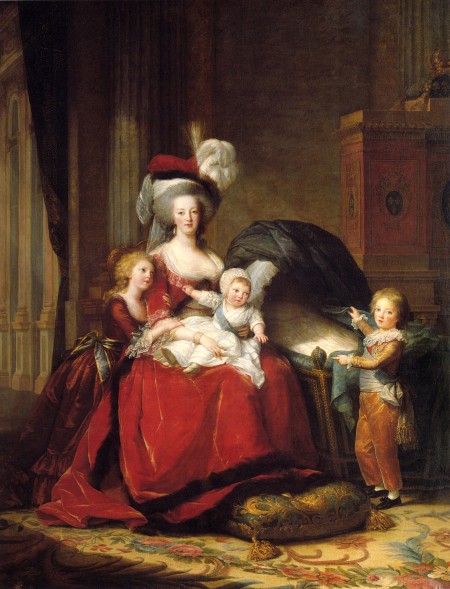
Once
Louis and Marie figured out how sex worked, they had four
children. Costigan said this picture had an interesting
story.
It was
painted when Marie Antoinette was pregnant with her fourth
child. However the child died in birth, so they simply
painted over the baby in the crib.
That explains why
there is a boy pointing at an empty crib.
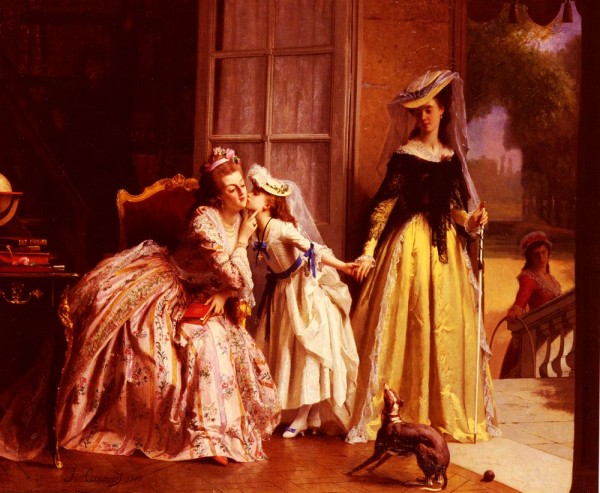
Marie
Antoinette may have had her faults. However, she was
said to be a loving mother.
At her
trial, in an attempt to accuse her of something evil enough
to justify the cruelty of murdering her, the Court accused
Antoinette of molesting her son and committing incest.
Marie Antoinette, to whom motherhood had been sacred,
addressed the crowd: “I appeal to all mothers present – is
it true?"
Apparently the power of her stare and the conviction in her
voice was so powerful that even her enemies backed down in
shame.
|
The Downfall of Louis XVI
|
So what about Louis XVI?
We know he became the chief sacrificial victim of the French
Revolution, but did he deserve his fate? What was the
extent of his responsibility?
Wikipedia gives
the facts, but keeps things pretty dry. Sometimes I
have to poke around a little.
I ran across a
web site that listed some of the small things that Louis XVI
did.
•
He was a good father to his children.
•
He was the first one to
establish a fire station in Paris.
•
He ordered the establishment of well equipped
nurseries in
prisons.
•
He fund-raised for Valentin Hauy, the
first blind school where Louis Braille would develop a
system of reading for the blind.
•
He opened the first children's hospital
known today as Hopital des
enfants malades (Hospital for child sickness).
•
He financed the experiments of the brothers Montgolfier
which led to the first air balloon.
•
He first implemented the idea of giving retired people money for
their service.
•
He financed L'Hotel Dieu in order that each patient should have
their own bed.
•
He first had the idea of giving people an indemnity in case
that they were found innocent of a crime.
•
He ordered a military hospital to treat "the enemy's wounded
as
if they were "les prope sujets du roi" (proper
subjects of the King). This enlightened attitude was 90 years before
the first Geneva Convention.
Simple gestures,
yes, but telling nonetheless. This is not the typical
behavior of an evil monarch. Trust me, no one would
have ever said these nice things about Peter the Great.
Oddly enough,
America would inadvertently play a huge role in the downfall of King Louis XVI. Thanks to America, one of the most significant moves of his
15-year reign would backfire terribly on Louis.
Strangely enough, it was his sympathetic nature that did him
in.
The infamous
Boston Tea Party took place shortly before Louis XVI took
the throne at age 19 in 1774. The Boston rebellion - no taxation without
representation!! - would of course lead to the 1776 Declaration of
Independence.
We already know
the Seven Years War had left France nearly bankrupt.
However, there
was one other highly significant consequence to the war.
It happened that Britain had suffered
financially due to the war almost as much as France.
The Seven Years War had practically doubled Britain's national
debt. The British Crown, seeking sources of revenue to pay
off the debt, imposed new taxes on its colonies. Their
attitude was that Britain had gotten rid of the Indians and
the French for the colonists, so why not help them pay the
bills?
When put that
way, the American position doesn't seem quite so righteous
any more. In addition, if anyone had any idea how
little the hated tea taxes actually amounted to, they would
break out laughing. The colonists were without
question the least-taxed people in the entire Western world.
It was the heavy-handed way the British Government
approached the tax issue that had incensed the firebrands in
Boston and New York.
In the end, it
was not the burden of higher taxes that motivated the
political opposition to the Tea Act, it was the principle of
self-governance. No one likes to pushed around.
More and more the taxation
attempts were met with stiff resistance in the Colonies.
Fed up with the spoiled brat antics of the Colonies, British
troops were called into Boston so that representatives of the Crown
could safely perform their duties. Next came Paul
Revere's Ride, Concord, Bunker Hill, and so on.
So there you
have it. The French-Indian War had forced Great
Britain to overplay its hand in the Colonies with
heavy-handed taxation. Now the American Revolution had
begun and things weren't going very well for the upstart Colonists.
In 1776,
just two years after Louis XVI was crowned, a
goofy-looking, white-haired foreigner with not a clue how to
dress properly was seen hanging around the French court.
His name
was Benjamin Franklin. Franklin had come to Versailles seeking help against the British in the Revolution.
Louis XVI and his advisors knew why Franklin was there, but
considered the American Revolution a lost cause. So
Louis XVI refused to even see Franklin. Nevertheless,
Franklin hung around. And why not? The
accomplished Franklin was feted throughout scientific and
literary circles and he quickly became a fixture in high
society.
Furthermore, although
Franklin was now in his 70s, his fame, wit and charm made him a
huge favorite with the ladies at French court. Rumor
has it that Franklin greatly enjoyed the attention.
The King kept Franklin at arm's length for over a year, but
the remarkable October 1777 victory at Saratoga softened the King's
cold shoulder. This was the first signal that backing
America in their revolution might not be a waste of
money after all.
Still smarting from their
embarrassing loss to Britain in the Seven Years War
(known as the French-Indian War to the Americans),
the French definitely held a grudge. That damn war had left
France unbelievably bitter towards Great Britain.
Therefore the thought of backing the colonists against England was
very appealing indeed. England had said it would teach
French how to fight civilized warfare, well, remembering
Prussia, France would show the English what it felt like to
fight two opponents at once.
Now we see
the silver-tongued devil himself, Benjamin Franklin, working
his persuasive magic on the 22 year old French king.
Franklin says, "Louis,
France has a chance to teach
those damn British a lesson they will never forget!
Great Britain has stolen Canada from France. Now,
Louis, here at last is your chance at revenge. Let history
remember you as the King who made sure that Great Britain
lost the Colonies."
At this point,
Louis XVI began to nod. Yes, indeed, let's teach England a
lesson. From this point forward, he would support the
Colonies with money, arms, expertise, and even French
soldiers and French Navy.
And why would he
do this? His French advisors liked what Franklin was
saying. The enemy of our enemy is our friend! They were keen on any plot
that might weaken and humiliate England, the bitter enemy of France.
And perhaps France could regain Canada in the process,
right?? Yes, mais oui, maybe so!
Few Americans
have any idea just how instrumental the French were in the
eventual victory. All
historians agree that France's decision to help America was
the turning point in the war.
Money, arms, Marquis de
Lafayette and so on made a huge difference. Indeed, it was the French naval blockade of Chesapeake Bay
at Yorktown in 1781 which set the trap that ended the
American Revolution.
In late summer
1781 Lord Cornwallis led the main British army of the South
onto the Yorktown Peninsula, Virginia. Now he confidently
awaited rescue by the British fleet.
He knew a British fleet of 19 ships under the command of Admiral
Thomas Graves was on its way to rescue the troops.
Unbeknownst to
the British, the French admiral Comte de Grasse was
simultaneously heading north with his entire fleet of 24
ships from the West Indies to Chesapeake Bay at Washington's
request. The French got to Chesapeake Bay first.
On 5 September 1781, the
two navies squared off in the Battle of Virginia Capes. Although the
initial fight was a stand-off, Comte de Grasse had an ace up
his sleeve. He knew that French Admiral de Barras was
bringing additional French ships and siege cannons down from
Rhode Island.
So de Grasse played cat and mouse in the
waters for several days to keep the British occupied. When
de Barras arrived, Thomas Graves realized he was outnumbered.
He rushed back to New York for
reinforcements. By then, it was too late.
Cornwallis had
no choice but to surrender before help could come.
The story of the naval battle at Chesapeake Bay is largely
unknown in America which is strange because it was pivotal. British naval historian Sir William James labeled
it
the “decisive battle of the war” because it sealed the fate
of Cornwallis and the British cause in America. The war was
over.
And what was
France's reward? Strangely enough, absolutely no spoils of war came to
France. No Canada. No British-held Caribbean
islands. Other than the satisfaction that came from seeing
its arch-rival England humiliated, France got absolutely no land and no
money in return for its massive investment.
Few Americans
have any idea just how costly the French intervention had
been for the French. France did of
course receive a
heart-felt 'thank you' on the part of the former colonies.
However,
that didn't help the bank account.
The National treasury of France was now empty and the nation
was nearly bankrupt. Louis XVI was about to learn a
bitter lesson - no good deed goes unpunished.
There were suggestions of new taxes in
the air that inflamed the already superheated hostility in
Paris... but the angriest people were not the peasants,
but rather the nobility.
The taxation
system was burdensome upon the middle class and the
peasants. Worse, the nobles were largely able to
exempt themselves from taxes. And it wasn't just the
nobility that got off scot-free. The peasants were
expected to support the Church as well.
As with the
nobility, the Church paid no taxes. It merely
contributed a grant to the state every five years, the
amount of which was self-determined. The upper echelons of
the clergy had considerable influence over government
policy. Together, the Church and the nobles made sure
everyone in France kept paying the bills as long as it
wasn't them.
Under Louis XVI, radical financial reforms suggested by his
ministers, Turgot and Malesherbes angered the nobles.
These moves were blocked by the parliaments who insisted
that the king did not have the legal right to levy new
taxes.
So, in 1776,
Turgot was dismissed and Malesherbes resigned. They were
replaced by Jacques Necker. Necker,
a foreigner, had been appointed Comptroller-General of Finance.
Necker realized that the country's extremely regressive tax
system subjected the lower classes to a heavy burden, while
numerous exemptions existed for the nobility and clergy.
Necker
argued that the only
solution was to reduce tax
exemptions for the nobility and clergy.
This suggestion was not
received well by the King's ministers. They were
furious that Necker had made the bold move of proposing new taxes
on the wealthy and
restricting the power of the parliaments. They strongly
suggested Necker be dismissed.
Charles
Alexandre de Calonne took Necker's place. Calonne spent liberally for a time, but he
soon
realized the financial situation was just as critical as
Necker said it was. Now he too proposed a new tax code.
The proposal
included a consistent land tax, which would include taxation
of the nobility and clergy.
Louis convened
the Assembly of Notables in 1787 to discuss the
revolutionary new fiscal reform proposed by Calonne. Calonne's idea was remarkably
similar to Necker's. And it was received with
remarkably similar
opposition from the parliament.
Exasperated by
the short-sightedness, Calonne decided to tell everyone once and for
all just how desperate the situation was. When the
nobles were told the extent of the debt, they were shocked;
however, the shock did not motivate them to rally behind the
plan – but to reject it. Calonne's gamble had failed.
Turgot,
Malesherbes, Necker and now Calonne. All four
ministers had stated the urgent need for reform and all four
times Parliament had rejected them. The moneyed class
and the Church liked things just the way they were.
Wealth was
concentrated in a very small percentage of the citizens who
held all the power and refused to make the system more fair
to all.
When Calonne was
turned down in 1785, this negative turn of events signaled
to King Louis that he had lost the ability to rule as an absolute
monarch. He fell into a deep depression.
The
dissatisfaction in France had been growing for some time. France
was nearly bankrupt; the people knew it. Furthermore,
the people knew no progress was being made to solve
the problem. The situation that pushed things
over the top was hunger. There was a great scarcity of
food in the 1780s. A series of crop failures caused a
shortage of grain, consequently raising the price of bread.
Because bread was the main source of food for poor peasants,
this led to wide spread starvation.
The two years
prior to the revolution (1788–89) saw meager harvests and
harsh winters. While the poor people went hungry, the streets
of Paris were filled with agitated people worried about the
paralysis of their government to do anything.
It was about
this time that Marie Antoinette was said to have uttered the
famous words, "Let them eat cake". Although history
has perpetuated the myth, modern historians say it is absurd
to think she ever said any such thing.
Antoinette's
may have liked clothes a bit too much, but by all accounts she had a sympathetic heart.
Nevertheless,
someone started the rumor and the rumor stuck. Due to
Antoinette's role as scapegoat for all problems, the
phrase acquired great symbolic importance. Any time the
revolutionary historians needed a simple way to demonstrate
the callousness and selfishness of the French upper class,
they merely trotted out this anecdote.
After the defeat
of Calonne's reforms, none other than Jacques Necker was
recalled back to the office of Director-General of Finance.
During his absence from office, Necker had acquired a
myth-like status as a fiscal hero. He was seen as the saviour of France, the only man who could
stop the deficit and save the country
standing on the brink of financial ruin.
Unfortunately,
all Necker succeeded in doing was angering the powerful
nobles again. Necker's dismissal on 11 July 1789 made
the people of France incredibly angry. It sparked rumors
that the King meant to attack Paris or arrest the deputies.
Keep in mind that rumors had more power than fact at this
point in time.
When the news
spread of Necker's
ousting, the people in the street began open rebellion. The arrival of
foreign mercenaries further inflamed them. They
assumed the King had brought these troops in to control
the crowds so they couldn't be heard.
Well, they were
going to be heard anyway. Paris was consumed by riots,
chaos, and widespread looting. The mobs were not contained
because they had the covert support
of some of the French Guard who were assigned to control
them.
But what to do about
the threat of the foreign soldiers?
On 14 July 1789 the insurgents set their eyes on the large
weapons and ammunition cache inside the Bastille
fortress, widely perceived to be a symbol of royal
power.
The medieval
fortress and prison in Paris known as the Bastille
represented royal authority in the center of Paris. At the
time of its storming the
prison only contained seven inmates, but it remained a symbol of the abuses of the monarchy.
After several
hours of combat, the prison fell that afternoon. Despite
ordering a cease fire, which prevented a mutual massacre,
Governor Marquis Bernard de Launay was beaten, stabbed and
decapitated; his head was placed on a pike and paraded about
the city. The violence was way out of hand.
The Bastille had served as a potent symbol of the hated
Ancien Régime. Its
fall was the flashpoint of the French Revolution because it
represented open rebellion. Now the rioters were emboldened
to go even further.
As civil authority rapidly deteriorated with random acts of
violence and theft breaking out across the country, members
of the nobility feared for their safety. Many fled to
neighboring countries. These émigrés, as they were
called, funded counter-revolutionary causes within France
and urged foreign monarchs to offer military support to a
counter-revolution.
There was a
looming battle of the rich against the poor.
Wild rumors and paranoia caused widespread unrest and civil
disturbances that contributed to the collapse of law and
order. For example, in rural areas, many commoners began to
form militias and arm themselves against rumors of a likely foreign invasion.
Anarchy reigned. Citizens
attacked the châteaux of the nobility as part of a general
agrarian insurrection known as "la Grande Peur" (The Great
Fear).
The final straw
came on 5 October 1789. Crowds of women driven by a
variety of agitators converged on the Hôtel de Ville
in Paris. They demanded not only bread, but arms. The women were
responding to the bread shortages and harsh economic
situations they faced on a daily basis.
Getting
unsatisfactory responses from city officials, the mob
decided to take their protest to Versailles. As many as
7,000 women joined the march to Versailles. They brought
with them cannons and a variety of smaller weapons.
During the long
twelve mile, six hour March of Women, wild rumors flew back and
forth. Threats of an "aristocrat plot" to starve the
poor and stories of Antoinette's orgies were rampant and
readily believed. Inflamed, the mob of mostly Parisian women
began calling for Marie Antoinette’s blood.
Although the
French war hero Marquis de La Fayette had 20,000 National
Guardsmen under his command, he discovered to his dismay
that his soldiers were largely in favor of the march.
They refused to obey his commands to immediately move to
Versailles to protect the king.
Oddly enough, when the mob
finally did reach Versailles, they were too tired to do
anything else but surround the Palace and lay siege. Hungry,
fatigued, and bedraggled from the rain, they just wanted to
be fed. Assuming the siege was a simple demand for food,
the protectors underestimated the danger.
At six o'clock
in the evening, King Louis XVI made a belated effort to
quell the rising tide of insurrection: he announced that he
would accept the August decrees and the Declaration of the
Rights of Man without qualification. That seemed to
calm the crowd. Everyone relaxed, the worst seemed to
be over for now.
At this point,
someone literally let their guard down. The bulk of the
royal guards were withdrawn to the far end of the park of
Versailles to get some much need rest. They had been deployed under arms for
many hours facing the hostile crowd.
However, the
crowd was subdued. In the words of
one of their officers: "Everyone was overwhelmed with sleep
and lethargy; we thought it was all over."
This left only
the usual night guard of sixty-one posted throughout the
building while 7,000 angry people slept outside.
At 6 am, some of
the protesters discovered a small gate to the palace was
unguarded. Making their way inside, they searched for the
queen's bedchamber. The royal guards raced throughout the
palace, bolting doors and barricading hallways. Guards
in the compromised sector fired their guns at the intruders,
killing a young member of the crowd. Big mistake. Infuriated, more protesters surged towards the breach and
streamed inside.
Meanwhile a
screaming death squad lunged straight toward the Queen’s
apartments. They swore to slice her to pieces. Her guards gave
their lives to protect her. Two guardsmen attempted to face down the crowd and were
overpowered. The violence turned into savagery as one
guard's head was severed and raised on a pike to the
screaming delight of the attackers.
As the
terrifying
screams filled the halls around her, the queen ran
barefoot with her ladies to the king's bedchamber. The door
was locked for safety!!
Antoinette spent
several agonizing minutes banging on its locked door, but no one on Louis'
side could hear the pounding due to all the noise in the
halls. Meanwhile the attackers could hear Antoinette's
screams and used her voice to located her.
The Queen's the frantic calls
went unanswered until literally the last possible second.
Just as the attackers closed in, the
doorway opened to allow the women to barely escape.
Antoinette narrowly missed a certain death.
The chaos continued as other royal guards were found and
beaten; at least one more was killed and his head too
appeared atop a pike. Once more guards appeared, order
was restored.
On 6 October 1789, the King and the royal family moved from
Versailles to Paris under the "protection" of the National
Guards. The Royal family
was now held prisoner at the Louvre, a building which was the
royal residence before Versailles.
|
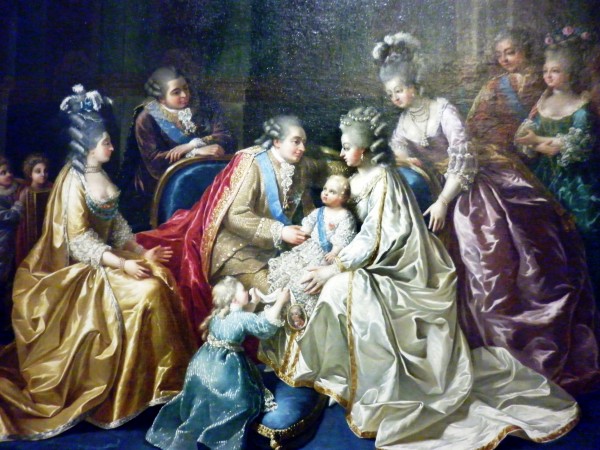
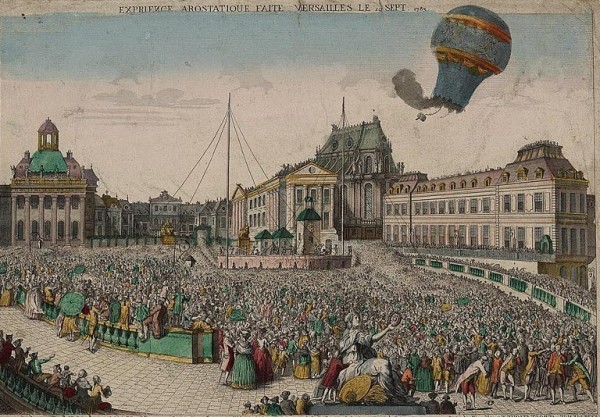

The
1773 Boston Tea Party
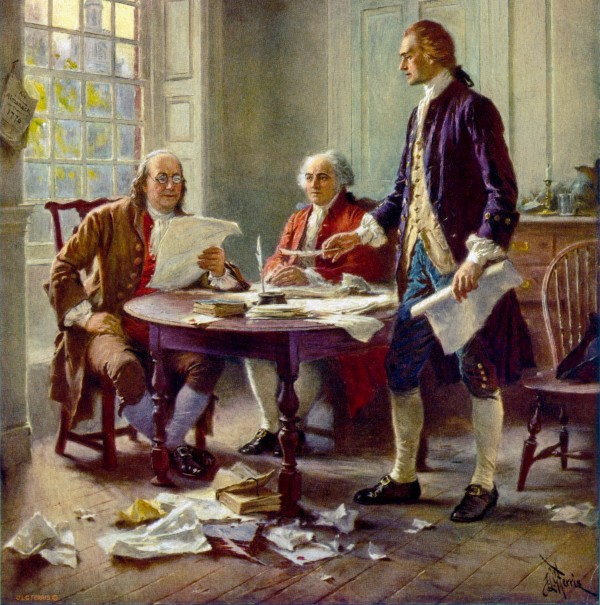
Benjamin Franklin and John Adams proofread Thomas
Jefferson's Declaration of Independence
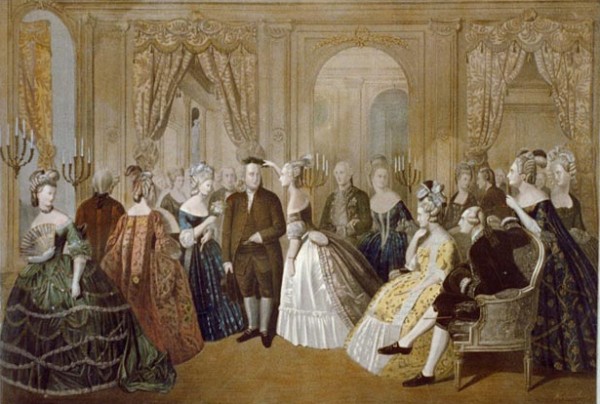

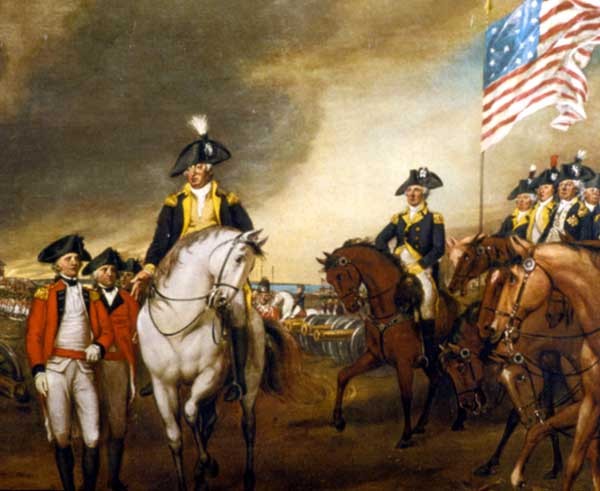
In
1781, Lord
Cornwallis was pinned down in Yorktown, Virginia, thanks to a
clever naval trap suggested by George Washington.
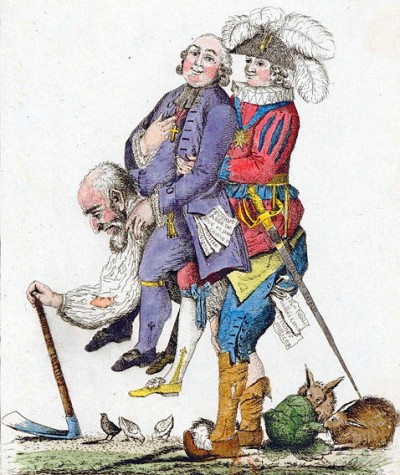
This
political cartoon shows the Church and the Nobles hitching a
ride on the back of a peasant farmer. Political cartoons
have an interesting way of getting right to the heart of the
matter
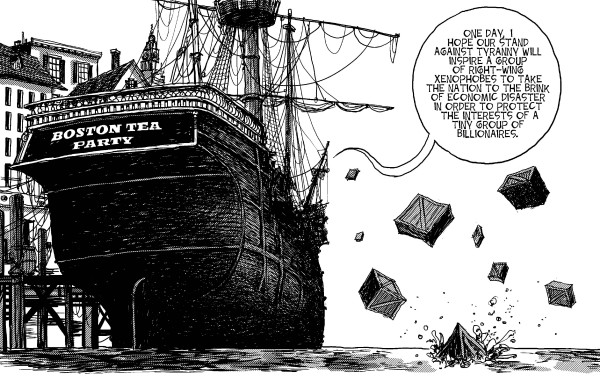
After
Costigan finished explaining how nearly all wealth had
become concentrated in a small group of French nobles that
refused to make the necessary changes, he had a little
surprise for the group.
He
said the hot book here in France was
Capital in the Twenty-First Century
by French economist Thomas Piketty. Piketty's
specialty is wealth income and inequality. Piketty
claims that America's economic situation today is a lot more
similar to the economic situation of the French
Revolution than most people realize.
Costigan added the October 2013 Senate shutdown of the
American government over "Obamacare" was eerily reminiscent
of French Parliament's refusal to pass legislation to
alleviate the tax burden.

There
is no evidence Antoinette actually said this
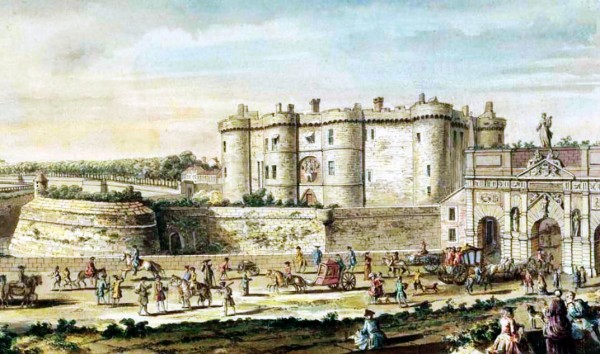
The
Bastille was where political prisoners were sent. It
became the hated symbol of royal oppression.
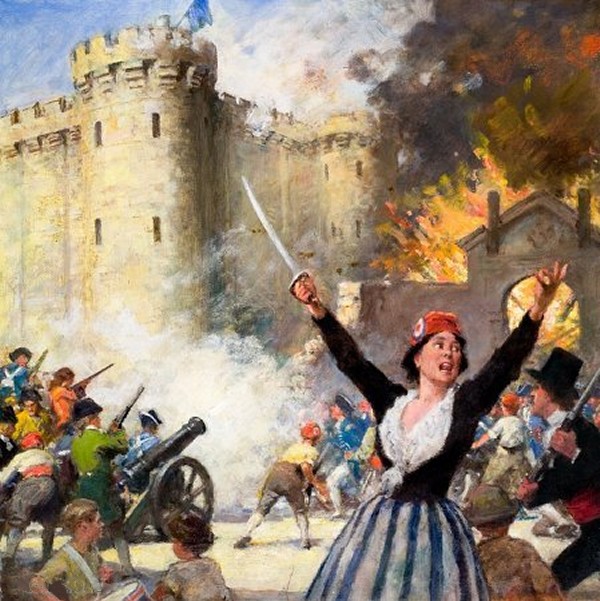
Storming the Bastille, 14 July 1789.
The
French Revolution took place just eight years after the
British surrendered at Yorktown. Historians agree
it was the success of the American Revolution that
encouraged the French to rebel as well.
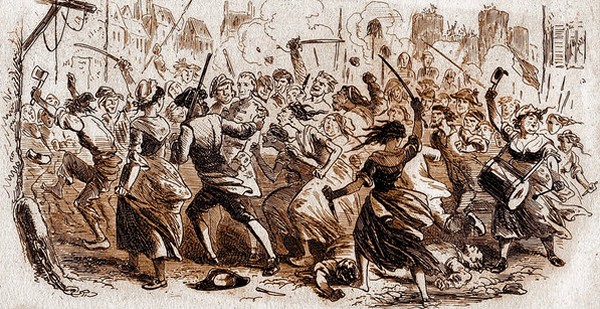
The
angry attack on Hotel de Ville in Paris, 5 October 1789
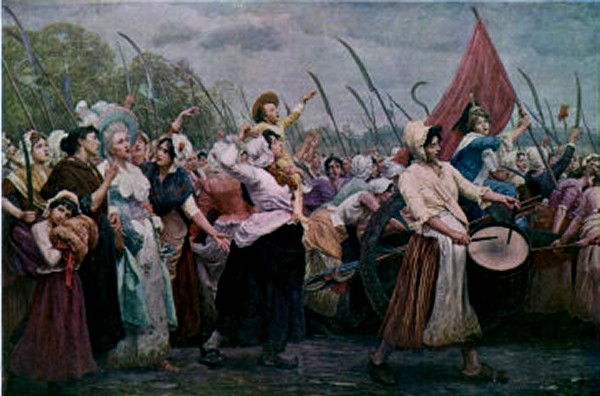
The Women's March on Versailles, 5 October 1789
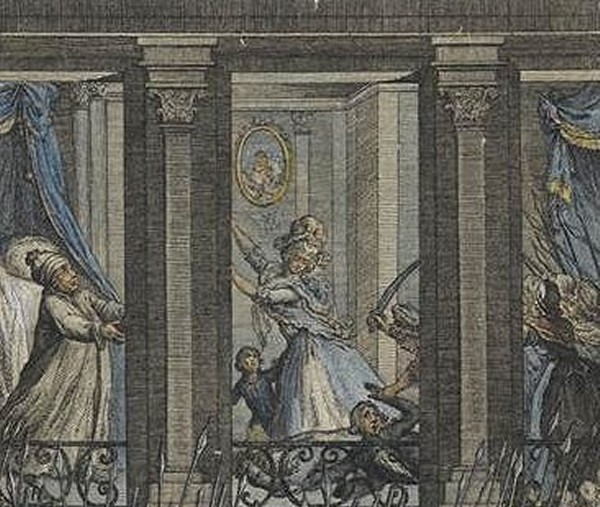
By all
accounts, Antoinette missed death by mere seconds. The
door opened just as her assailants were closing in.
Furious at their prey's narrow escape, the mob contented
itself with destroying the Queen's bedchambers and stealing
any souvenir light enough to be carted off.
|
|
|
Marie
Antoinette
|
The miserable story of Marie Antoinette has transfixed
generations of darkly fascinated readers curious to know if
her horrible fate was indeed justified.
According to
Costigan as well as my own research, I think the woman's
treatment was totally unwarranted. I could find no
acts of crime or cruelty on her record to justify taking her life.
Plain and
simple, they wanted to kill her; it didn't matter that they
didn't have a reason.
Antoinette was
shoved around from the very start by the people of her
adopted nation.
When Marie Antoinette was 12 years old negotiations for her
marriage to the Dauphin began.
Portraits, rings and dowries were discussed. Unfortunately
Antoinette’s teeth were too crooked for French taste. So oral
experts were called to perform several painful operations
without anesthetic.
The moment finally arrived for Marie Antoinette, now in
possession of perfect teeth, to cross the border from
Austria to her new life in merry Paris. She had to walk away
from her own staff, into the arms of the French representatives…
naked.
She was forewarned she’d have to undress, walk
across and curtsey to the delegate holding her underclothes. Not a single scrap from her Austrian life could enter her
French one.
How ridiculous to intimidate the young girl (14) like that!
Antoinette submitted to the foolishness nonetheless.
She crossed the border naked and grabbed her new underwear from powdered French hands.
When she came of
age five years later, the young Queen
threw herself into a life of pleasure, hosting opulent
parties and going to masked balls in Paris. She fully embraced
France’s style and fashions. She spent lavishly on her
appearance, influenced fashion throughout Europe with her
high headdresses, plumes and voluminous dresses. Her
elaborate hairstyles which reached 3 feet in height,
exemplified the monarch’s love of luxury.
She began to order clothes from the fashion house
of Rose Bertin. While her husband built up debt by helping
to finance the American Revolution, Marie did the same with
her wardrobe. It came to 300 new dresses a year.
At the height of her glamour (prior to the birth of her
first child), Marie Antoinette spent a fortune on clothes,
accessories and pouf hairstyles. Although she received an
allowance of 120,000 livres per annum to cover these
expenses, she often spent far more than that. In 1786, she earned the
nickname "Madame Deficit" for spending more than
twice her allowance. Her shy, indecisive husband covered her
overages without complaint.
Madame de Campan
was her lady in waiting. According to Campan's memoirs, Marie Antoinette typically
ordered twelve grand habits, twelve robes with paniers and
twelve undress robes each season. Everything was given away
at the end of the summer and winter seasons to make room for
the new. There were three rooms allocated in Versailles for
her clothing.
In one year
alone, she ordered 172 new gowns. It wasn't only
dresses; her perfumes from Jean-Louis Fargeon
and her lavish parties all helped to create negative. Resented by the French
citizenry for her foreign birth and extravagant lifestyle,
Marie Antoinette has gone down in history as an arrogant and
apathetic monarch.
Antoinette began
to develop her bad reputation around the time she first
became Queen. She had come to court as a young teenager.
She was married at 15. For the next several years,
Antoinette continued to do as told.
One day a light
bulb clicked on. I am the Queen!
Antoinette had
just realized she didn't have to listen to these awful biddy
matrons ordering her to do this and do that any more. Now she began to
exercise power as queen. Her first decision was to
rebel. Sick and tired of being ordered to conform to
the strict rules of French etiquette, she decided from here
on out she would do things "her way".
While of course
no one could stand in her way, her rebellion had its price.
The ladies of the French court, arbiters of all things
dignified, made sure to let the whole world know that
Antoinette had failed to master the intricacies of French
etiquette.
This terrible
faux pas resulted in her bad reputation. Antoinette
was not dignified enough to deserve to be a French Queen.
Pretty nasty
games, yes??
From the moment she had come to Versailles,
Antoinette
had been intensely lonely. Now she was unhappy in her marriage as well.
She was a Venus, but he was no Mars. Louis was homely,
awkward and lacking in any sexual skills whatsoever. His devotion to
the hunt, his beloved clocks and his workshop stood in stark contrast to
her pursuit of the arts, fashion and dance.
In her pursuit
of French
nightlife, Marie Antoinette
sought escape from her marital frustration and the boredom
of court life. Spending spent less time at
court, Marie surrounded herself with a wild and dissolute
clique. She lavished expensive gifts and positions
upon these friends and in doing so ignored the great houses
of the French nobility. She did not play politics
well.
With her young friends, Marie Antoinette threw herself into
a life of pleasure and careless extravagance. These included
masked balls in Paris, gambling, theatricals and late night
promenades in the park. Her circle included the King’s
frivolous young brother the Count of Artois, and handsome
young courtiers such as the Duc de Ligne, Counts Dillon, Vaudreuil
and Axel Fersen.
The Queen’s indiscretions with her circle of friends led to
scandals and rumors concerning her relations with that
circle including Axel Fersen, a man she likely had an
affair with.
Her misbehavior
during her Wild Child period
became legendary. Today Marie Antoinette
is the leading symbol for the wanton extravagance of the 18th
century monarchy.
While there can be no denying that Antoinette overdid the
fashion-party thing, let's cut her some slack. As the
beautiful Queen of the wealthiest, most stylish country in
all
Europe, Marie Antoinette
did exactly what was expected of her!
Simply put, the Queen of France as
head of the most glamorous court in Europe, was expected
to look divine.
I remember reading
how Antoinette's contemporary, the
Tsarina Elizabeth of Russia, did exactly the same thing.
Elizabeth owned 15,000 dresses!
Antoinette was guilty of
doing nothing more evil than what was expected of her - to
look like the Queen of France. If you stop and think about
it, that was her duty.
Yes, a woman who
was politically more astute than Antoinette, Lady Diana for
example, might have known when to tone it down. Growing up as
protected as she was from the real world, it is likely
Antoinette did indeed live inside a separate world... and so did
most of the other French nobles who behaved just as poorly.
The rich have long had their ways to isolate themselves from
society's problems and the pain of the poor.
But is
Antoinette's lack of sensitivity any reason to whack off her
head or murder her in cold blood at Versailles? Of
course not.
Let's face it -
the people of France were full of hate.
It wasn't just
Antoinette and Louis who were unlucky enough to be caught
under the blade during the Great Fear. They were
joined in death by 16,000 other people who died. Many of
these
victims
were completely innocent of any particular treason or crime...
their only sin was being born to families with money.
What is
particularly sad about Marie Antoinette is that she got
blamed for everything that went wrong. She became the
lightning rod for the vast sea of resentment built up over centuries
due to royal exploitation. While the Royals were
well fed and greatly pampered, the peasants were doing all
the work. Through their suffering, they were expected
to support the few fortunate people who believed it was
their right by birth to maintain this unbalanced system.
No matter what went wrong,
Antoinette was blamed. When the poor
people were starving, it was her fault. When the
nation went broke, it was her fault.
After the French
citizens were finally let in on the national shame that the
State was bankrupt thanks to its military stupidity, it
became the fault of "Madame Deficit" as if she
alone had actually bled her country dry with dress
spending.
Notoriety nipped
at Marie Antoinette’s heels no matter what she did.
Referred to as the La Autrichienne (Austrian bitch)
behind her back, this woman simply could not win.
There is a great story known as the
Necklace Affair that makes this perfectly clear.
You will not believe the ending.
|

Marie
Antoinette was known for her elaborate dresses
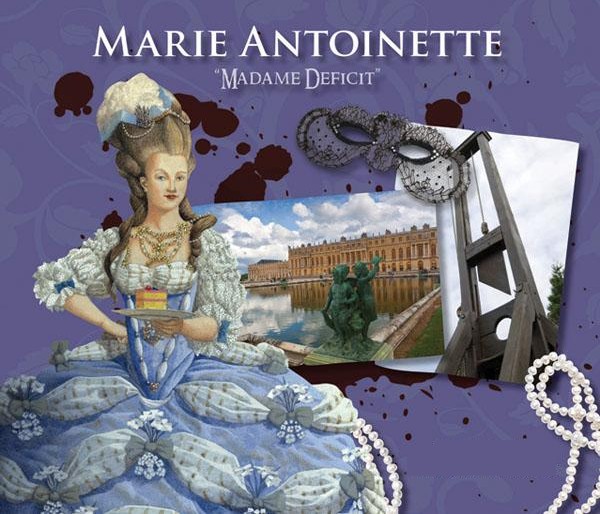
Someone did a nice job on this picture. The picture
says it all -
the dress, the big hair, the masked balls, the necklace
affair, the extravagance of Versailles, the cake,
Antoinette's reputation as Madame Deficit, and of course the
guillotine and the blood.
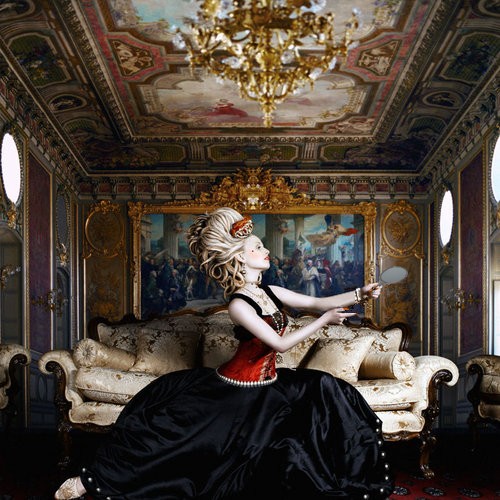
The young
Marie Antoinette was said to be quite beautiful and quite vain.
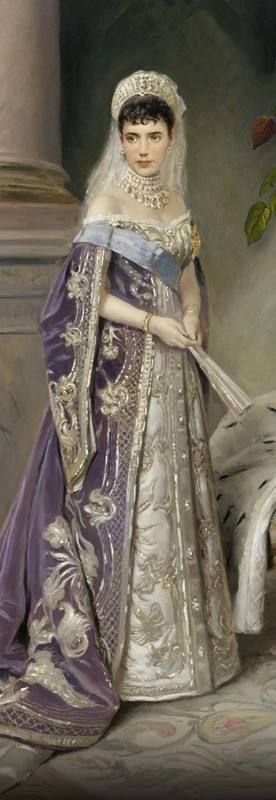
This
is Tsarina Elizabeth of Russia, daughter of Peter the Great.
Perhaps a bit vain, Elizabeth was said to own 15,000 dresses
- none of which she ever wore twice! Elizabeth
changed outfits two to six times a day. While Antoinette was
criticized, Elizabeth was admired.
(Rick's
History of Russia).
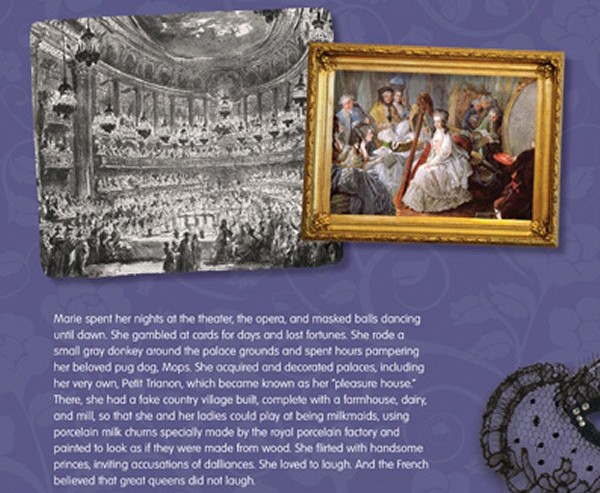
Here
is a list of some of the awful things done by Marie
Antoinette.
If these are the worst things people can
say about the woman, then I would conclude the treatment of
Antoinette was downright cruel.
|
|
|
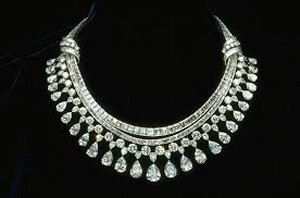 |
The Affair of the Diamond
Necklace |
| |
|
This is a
replica of the necklace at the center of the
Necklace
Affair,
a scandal that put Antoinette in a bad light. And what is its
value?
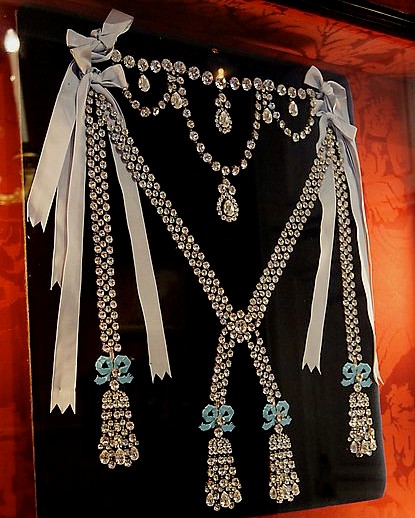 |
One
source claimed the necklace was worth $100 million
dollars.
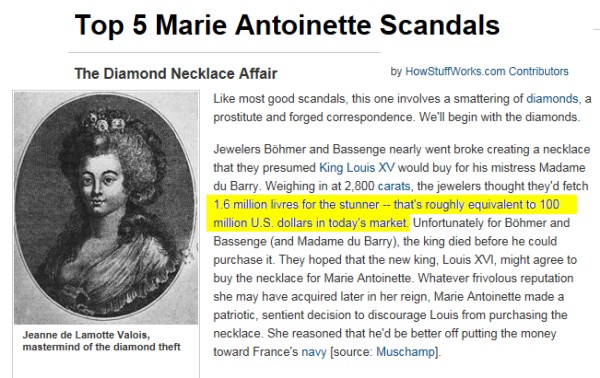
Rick's
Note:
It was extremely difficult for me to believe any piece of
jewelry could possibly be worth $100 million dollars.
I mean, c'mon now.
Personally, I think someone got
their conversion rates mixed up.
|
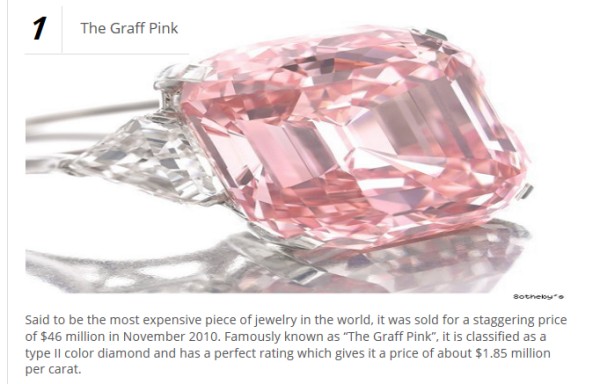 |
I
decided to see what some of today's most expensive jewelry
costs in case I wanted to buy something special for Marla's
birthday.
Unable
to contain my curiosity over the $100 million price tag of
the French necklace, I decided to see if any piece of modern
jewelry could fetch that kind of price.
Well,
here we go. The
Graff
Pink,
the most expensive piece of jewelry in the
world, is priced at $46 million. Now that is so much
more reasonable than $100 million! What a
bargain.
Several sources suggested the value of the French necklace
was equivalent to the value of an 1800 French warship.
I
think we can assume the value of the French necklace was
somewhere between $5 - 10 million dollars in today's money.
While
that isn't $100 million dollars, it is still quite a fortune
to be spending on jewelry... especially at a time when
France was broke.
|
| |
|
 |
Madame du Barry |
|
|
|
|
Our tale begins
with Jeanne du Barry, the exotic mistress of King Louis XV.
As reflected in art from
the time, Jeanne was a remarkably attractive blonde woman with thick
golden ringlets and almond-shaped blue eyes.
Nicknamed 'le roué'
(libertine), Monsieur Jean-Baptiste du Barry
was a casino owner. He was also a high-class pimp and procurer
who ran a high-class brothel.
The lovely Jeanne came
to his attention in 1763 when he found her entertaining in Madame Quisnoy's brothel-casino. Jean-Baptiste
du Barry quickly realized
her kind of beauty could make him a lot of money.
Monsieur du Barry lured
her over to his own establishment which had a much higher price
clientele. Her installed her in his household and made her his
mistress. Giving her the appellation of Mademoiselle Lange,
Monsieur du Barry helped establish Jeanne's career as a courtesan in
the highest circles of Parisian society.
Madame du Barry
was a very ambitious woman who didn't mind using people to
get where she wanted to go. Considering she got her
start in a high priced brothel, du Barry quite literally
slept her way to the very top of the social pyramid,
stepping on quite a few people to get there while being
impudent to anyone she saw as beneath her.
Jeanne immediately
became a sensation in Paris, building up a large aristocratic
clientele. She had many lovers from the king's ministers to his
courtiers. King Louis XV first noticed
her in 1768 and wanted her immediately. However, due to the
intricate rules of French court, Jeanne was not high-born and
therefore currently ineligible to be the King's mistress (one
has to wonder where these rules come from).
Not
surprisingly, the King found a way around the rules.
In 1769, the King and his sex toy began a torrid affair.
Now 60,
Louis XV was shocked at the intensity of their lovemaking.
He was astonished that this enticing woman had made him feel young
again and reawakened his sex drive.
Simply speaking,
the aging King
could not believe the power this attractive woman had to turn him on.
He just couldn't get enough. The king quickly became
very fond of du Barry and lavished gifts on her.
Some reports
suggest that in 1772 the besotted and infatuated King
approached Parisian jewelers Boehmer and Bassenge
to create an elaborate and
spectacular jeweled necklace for his mistress, one that
would surpass all others in grandeur. Other reports
suggest that these same jewelers took note of the King's
fervor and had the bright idea to create the world's most
fabulous necklace with the expectation that the besotted and
infatuated King wouldn't dream of turning the gift down when
it was ready.
Given that the
jewelers didn’t receive a commission for this necklace, it
seems more likely the second scenario is correct. It seems
the jewelers
had taken upon themselves the risk of purchasing the
diamonds and assembling it in a gaudy setting. Since
this is a key point, let me repeat that several sources
confirm the jewelers created the necklace on the assumption
that the king would automatically buy it for Madame du Barry once it was made.
The necklace was
comprised of 647 diamonds that weighed 2,800 carats.
The jewelers believed they would
fetch anywhere from 1.6 million to 2 million livres for the
stunning necklace, a vast sum. Assuming $2,500-$3,000
per carat, it cost perhaps $7-10 million in today's money. Boehmer had invested a fortune into this piece of jewelry.
This price was a bit steep, but then King Louis XV was not known
for his frugality. One can only assume that the two
jewelers had let the aging King know about the project and had
received at least a nod.
Unfortunately
for Böhmer and Bassenge (and Madame du Barry), the king died
in 1774 before he could purchase it, supposedly from
smallpox, but more likely from an overdose of sex.
|
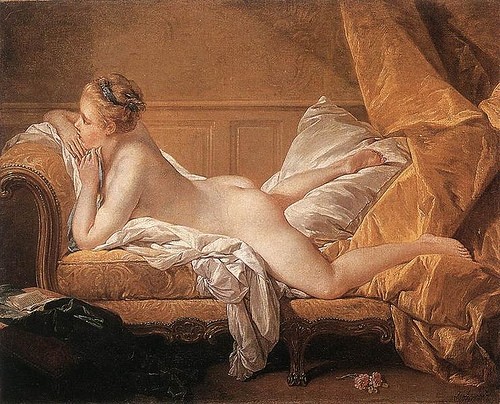
The French get
Madame du Barry and the best the Americans can do is Monica
Lewinsky. On the other hand, assuming the rumors about Marilyn
Monroe are correct, maybe America can hold its own after all.
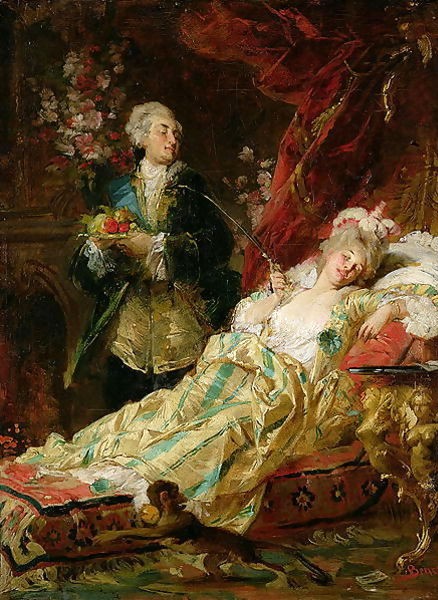
Louis XV, the
greatest womanizer in French history, met his match in Madame du
Barry, said to have insatiable sexual desires. Must have been
interesting.
|
|
|
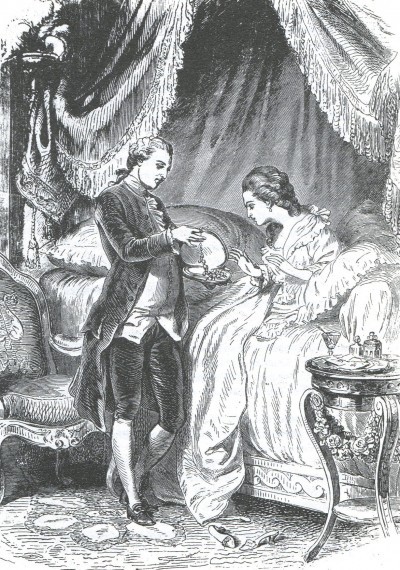
King Louis XVI
offers the necklace to Antoinette
|
King Louis XV began his
affair with the sexy Madame Du Barry, 27, shortly before
Marie Antoinette was married to his grandson Louis XVI in
1770.
Antoinette and Du Barry
did not get along well. Antoinette was only 15 at the time and
not happy at all at sharing the Palace of Versailles with a woman
more beautiful and far more vivacious than she. In Du Barry's
presence, Antoinette had to take a back seat.
The two women managed an
uneasy coexistence for four years during the heyday of Madame
Du Barry's sensational reign of seduction.
However, du Barry
made a serious mistake. By being nasty
to Marie Antoinette, Madame Du Barry would
pay for her insolence once her lover died. When King Louis XV
passed away in 1774, Du Barry was sent away from court never to
return. At the age of 31, Madame du
Barry, suddenly found herself whisked off to a nunnery.
Meanwhile, the death of
Louis XV was a shock of the highest magnitude for Boehmer and Bassenge.
They
were suddenly stuck with an expensive necklace and no buyer.
So what does a
jeweler do when left holding a necklace as expensive as this??
One would assume they had a deposit of some sort to
undertake such a task, but apparently not. Instead, the
jewelers hoped that the new king, Louis XVI, might agree to buy
the necklace for Marie Antoinette.
To their dismay, the
Queen turned them down. Marie Antoinette is on
record as discouraging Louis from purchasing the necklace.
According to Madame Campan, the Queen told her husband this
much money would be better spent on the
French navy.
More likely, the Queen
refused to have anything to do with a necklace originally meant for
her wicked rival. Who could blame her for that?
The jewelers Boehmer and Bassenge
spent the next seven years attempting to unload the
expensive necklace outside of France. They had no
takers. One can assume they were deeply worried.
|
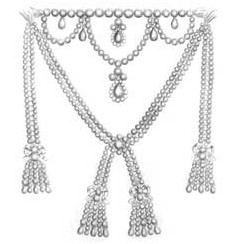 |
In 1781, the men
took note that Marie Antoinette had just given birth to the
dauphin Louis-Joseph. France now had an heir to throne
and there was great rejoicing in the land.
Sensing the good
mood might give them an opportunity, the
jewelers again attempted to sell the necklace to Antoinette.
As a young
woman, Antoinette had expensive tastes and flashy ways.
However, she had changed and settled down.
The Queen was
tempted, but she again
refused.
|
Jeanne de la
Motte-Valois
Every good swindle needs
a rogue. In 1785, a woman
named Jeanne de la Motte conceived a bizarre long-shot plan
to use the necklace to gain wealth and possibly power and royal
patronage. In a story straight out of Ripley's Believe
it or Not, here is how the our tale unfolded.
Jeanne de la Motte was
born into a pathetic family. Her father Jacques had an ounce of
royal blood in him, but mostly he was a poverty-stricken wastrel and drunkard. Her mother
was described as a debauched servant girl.
The family
had little going for them other than that single drop of royal blood.
Fortunately, that blood
paid off for them. After her father's noble Valois ancestry was
researched by a genealogist at Versailles, it was determined he was
a distant relative of the King. This was a huge break.
It not only meant a stipend, it gave them a title.
|
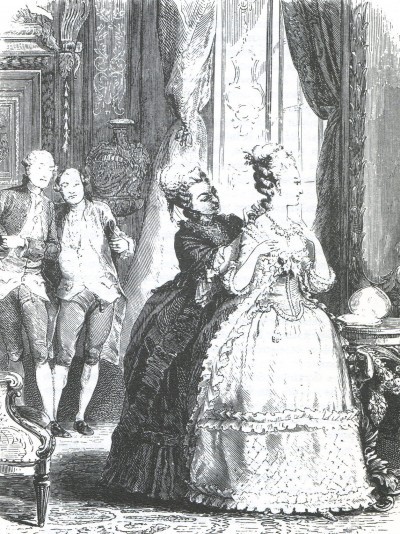
Antoinette's
personal assistant Madame Campan
assists with the necklace while Boehmer and Bassenge
watch hopefully
|
As a result of legal dispositions set up to help children
from "poor nobility", Jacques was granted a yearly stipend
of 1000 pounds and a post in a military academy.
This grant was
nonsensical at best: "I am noble and I am poor. Because
I am noble and need money,
I deserve money."
Who thought this
system up? No wonder the
legitimately poor people of France were so damn angry!
In June
1780 Jeanne de la Motte married
Marc Antoine-Nicolas de la Motte, an officer of the
gendarmes. While the de la Motte family's claim to nobility
was dubious, both she and her new
husband assumed the title comte and comtesse
de La Motte Valois. ('Comtesse' is
French for 'countess').
Now she was a "Countess",
Jeanne de la Motte had become a fringe noble with just
barely enough credibility to stick one toe inside the door
to the French court. Once she reached French Court,
she realized this was the life she had longed for.
As a
poverty-stricken child, La Motte had dreamed of a life like this.
Now she wanted higher status. In order to get more
status, she needed more money.
|
When it became clear that
husband Nicolas was unable to meet
Jeanne's extravagant style, Jeanne
resolved to ask for an even more
generous pension from the royal family due to her royal
blood. In other words, La Motte was
already getting something for nothing, but it wasn't enough for
French Court, so now she wanted even more something for
nothing.
Jeanne de la Motte's story serves as a perfect example of the corrupt
system whereby the lifestyles of the "nobles" were supported by the
peasants. The system was a strange form of reverse welfare for
royals. How pathetic.
In her desire to
get more something for nothing, Jeanne de
LaMotte decided to
approach Marie Antoinette directly.
She felt the Queen, known for
extravagance herself, would be
sympathetic to her terrible plight
of not having enough money to do Court extravagantly.
Jeanne therefore made frequent
visits to Versailles in the hope of catching the Queen's
attention. At that time, any ordinary citizen dressed in
suitable attire could enter the palace and its gardens and
observe the royal family.
Unbeknownst to
LaMotte, Marie
Antoinette had noticed her hanging
around. Antoinette had asked who she was and what she
wanted. After being been told of Jeanne's questionable
nobility and scheming ways, Antoinette refused to
meet her.
Although
they continued to live together, the
marriage between Jeanne and her husband
Nicolas was unsuccessful.
Jeanne took a lover, Rétaux de Villette, a
common gigolo and fellow officer to
Nicolas in the
gendarmerie. Villette would play a
major role in the story.
|

Comtesse
Jeanne de la Motte |
| |
Cardinal
Louis Rohan
|
|
|
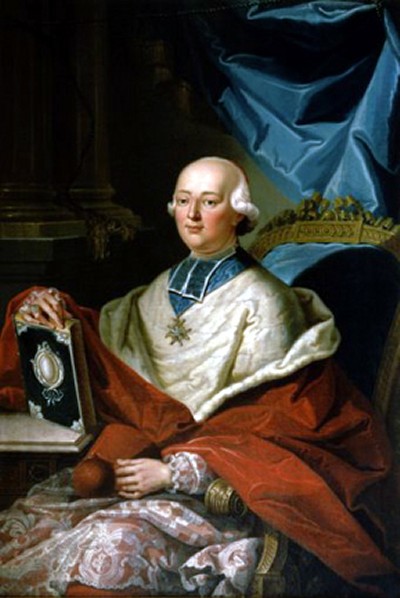 |
Thanks to her
"nobility", Jeanne de la Motteto had gained access to the fringes of
French Court. Although she was still dirt poor, this allowed
her to hang around rich people. In 1783, she used her new-found prominence to meet Cardinal
Prince Louis de Rohan.
The Rohan family was one
of the most influential in France... and La Motte knew it.
Prince Louis was destined for the Church from an early age. His
uncle was a Cardinal and bishop, and Louis was the designated
successor of these offices. As a talented scion of one of the most
important families in France, he had a bright future to look forward
to. As a child, he was raised to think of himself as a possible
prime minister of France.
Religious figures were often much more lax in their morals than a
modern person would expect. Priests, bishops, and cardinals were
known to have mistresses and illegitimate children. Madame du Barry,
for example, was the daughter of a wayward priest.
Positions in the church
were often hereditary and were granted based on social status rather
than piety; as such, it isn’t surprising that these men of the cloth
were not all devoted men of God. As a footnote to history, the bad behavior of the clerics
would eventually lead
to the rampant anti-clericism during the Revolution.
Prince Louis de Rohan was no exception. He was very worldly and not
particularly spiritual. Rohan
lived in luxury and was known for his sexual exploits. This was
frowned upon but not unexpected. It certainly did not stop Rohan from
remaining
the shining star of the Rohan family.
However, whatever hopes
Rohan had of political ascendancy were sabotaged – by Rohan himself.
The moment Jeanne de la
Motte met Rohan, the unscrupulous
woman wasted no time
becoming his
mistress. A clever woman, she made an
effort to
become his confidante.
As it turned out, Cardinal Rohan had a big
mouth. He liked to talk. So Madame de la Motte listened.
And such a tale she heard!
|
LaMotte learned that Cardinal Rohan
had once been the French ambassador to the court of Vienna.
She also learned that he had made a powerful enemy - Marie
Antoinette.
The Queen shunned
the Cardinal for several reasons. Her
mother Maria Theresa couldn't stand the man because he had attempted to
have sex with practically every woman he met in the Austrian court.
Antoinette
had also learned of a letter penned by Rohan in which the Cardinal spoke of
her mother the Austrian Queen in a way that Marie Antoinette
found offensive. This letter was the move
that sunk his career.
During his time
as the Austrian ambassador, Rohan had written a letter
involving the annexation of Poland to
none other than Madame du Barry, the flamboyant mistress of
King Louis XV and hated rival of Antoinette.
Learning that
Rohan was saying bad things about her mother to her rival was bad enough, but
it was worse than that. One night at dinner du Barry read the letter out loud to a group of people at her
table. It was a top-secret report on the imminent
partition of Poland at the hands of Russia, Prussia, and
Austria. The letter said:
“I have
just come from an audience with the Empress of Austria,
and I found her weeping for the woes of the persecuted
Poland. In one hand she clutched a handkerchief to
stanch her tears, in the other a sword to hack out
Austria’s slice of poor butchered Poland.”
The people
roared with laughter at the insult. However, now they
passed on the story until eventually it reached Antoinette
who seethed. Du Barry's faux
pas was unforgiveable. By insulting Maria
Theresa, she was also insulting Marie Antoinette.
However, it was Cardinal Rohan who had
given Du Barry the information by which Antoinette's mother had been
seen in this bad light.
And if that wasn't enough, Antoinette
was also aware of
Rohan's scandalous
and venal lifestyle.
From that point
on, Marie Antoinette refused to have anything to do with
Rohan. So, despite his family connections, he could not
achieve everything he wanted. Since the new king was
easily led by her, all favors flowed from the Queen.
His dreams of being Prime Minister were shattered.
At this point in
the conversation with Madame de la Motte, Cardinal Rohan hung his
head. This incident had taken place over ten years ago and his
career was still frozen. Rohan admitted he was dying to
resurrect his diplomatic career by becoming one of the King's
ministers.
But as long as
Antoinette opposed him, he had no chance. Rohan was well aware he had to regain the
Queen's favor first. Otherwise she would block any move he
tried to make. Rohan was at a loss to know how to
accomplish this since he had no contact with the Queen.
|
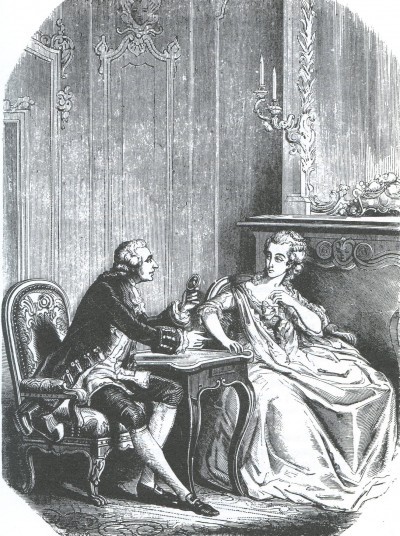
La
Motte listens to Rohan's tale of woe
|
|
LaMotte was
intrigued. There was some very interesting potential here.
Now
fully
aware
of the Cardinal's burning desire to win Marie
Antoinette's approval, LaMotte smiled and
reached out for the man's hand.
Looking Rohan
in the eye, LaMotte
said she could help him.
Jeanne de la
Motte persuaded Rohan that she had been received by
the Queen and enjoyed her favor.
Rohan took the
bait. He stared back incredulously with a flicker of
hope in his eye. "Really? You know the Queen?"
La Motte smiled
and nodded. "Yes, I do."
|
Rohan obviously
had no idea how close LaMotte was to the Queen. What
he did know was that he had noticed the Comtesse leaving the Petite Trianon,
Antoinette's favorite hideout, as
though she had just been in conference with the queen.
Unbeknownst to Rohan, this was one of La Motte's
very favorite
tricks. La Motte would literally hang around Versailles
attempting to run into people "by chance".
She would simply wait in the shadows at the
entrance of Petite Trianon until someone important came along.
Then she would
suddenly appear. Not only did this "chance encounter" give her an opportunity
to start a conversation, but she was also able to give the
illusion that she had just been in private conference with
the Queen. LaMotte had deliberately used this trick on Rohan several times. Now it had
just paid off in a big way.
In reality, LaMotte was about as close to the Queen as
Pluto is to the Sun. Yes, LaMotte was in French Court,
but only at the distant edge. But Rohan didn't know
this.
Apparently his
desperation was greater than his common sense. Because
right now Cardinal Rohan had resolved to use Jeanne's help to regain the
Queen's goodwill and possibly a high position in government.
Clear and
simple, LaMotte was playing a dangerous game. LaMotte
wanted to convince Rohan to give her money in exchange for
peddling her “influence” with the Queen.
In order to pull
this off, she needed to show Rohan something in return.
LaMotte assured
the Cardinal that she would make efforts on his behalf.
"Let's begin immediately. Why don't you write a letter to the Queen
while we are together?"
Rohan indeed
wrote a brief letter while LaMotte coached him on what to
say. She took the letter with her and said she would make sure the Queen received it.
|

Countess la Motte-Valois
was a cunning woman
who by hook or by crook was hell
bent on finding a way to become wealthy.
She eventually settled on "crook".
|
| |
|
 |
Correspondence with the Queen
|
| |
|
|
To Cardinal
Rohan's delight,
several days later LaMotte handed him a letter.
Noticing the letter was written on
exquisite gilt stationary, he had no doubt who the letter
was from. The Cardinal read the letter and
smiled. The Queen seemed
to be of an open mind to clear their differences. Rohan
was unbelievably relieved. This might just work out!
|
So how did Rohan
come to believe he and the Queen were exchanging letters?
Here is how it worked. Rohan would write a letter. Then Rétaux de Villette,
LaMotte's boyfriend and forger extraordinaire, would write
a flowery reply to Rohan's notes in the Queen's handwriting. Rohan
was completely fooled.
Villette was
apparently very good at this. He had a flair for romantic
writing. The tone of the letters
became very warm. Villette's words were so seductive in fact that the Cardinal was
becoming
convinced that Queen Marie Antoinette was in love with him!
Of course Cardinal Rohan
wanted that job, but now in addition he
became excited at the outside possibility of a love affair
with none other than the Queen of France. Not for a
moment did it bother him how absurd it was that a woman who had
previously thought so little of him had suddenly fallen for
him based on several letters.
That's the male ego for you.
Sadly, Rohan was over
the top. He became obsessed with meeting the Queen
face to face. Rohan
begged LaMotte to arrange a secret night-time interview for
him with the Queen.
Truth be told,
maybe Rohan was a little worried his fortune was too good to be
true. Even a man as vain and foolish as Rohan can
still entertain doubts. If he could just meet with the
Queen, that would calm his fears and stoke his fantasies as
well.
LaMotte saw how
determined Rohan was to meet Antoinette. She had not
foreseen this twist, but knew it was unavoidable.
LaMotte had to produce the Queen herself or kiss this scam
goodbye. LaMotte kept her cool and said no
problem. Then LaMotte added that this had to be kept a very big secret. Rohan nodded knowingly. Absolutely!
LaMotte knew
exactly what she was doing. She had a trick up her
sleeve. By chance, her lover Villette had recently met
a prostitute whom he swore was a dead ringer for Marie
Antoinette. With the right dress, a proper wig and some
serious coaching, LaMotte was optimistic they could pull
this disguise off... especially if it was in the darkness!!
|
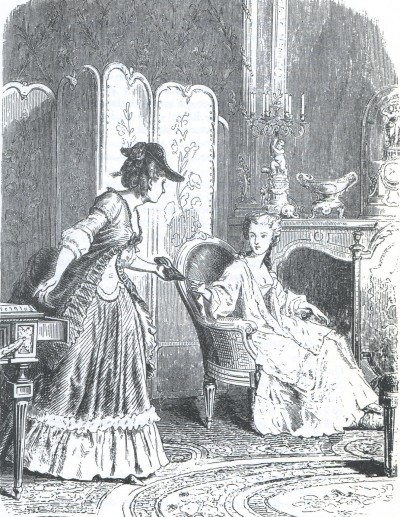
Jeanne
de la Motte hires Nicole Lequay d'Oliva to portray Marie
Antoinette
|
| |
|
 |
Midnight Rendezvous in the Garden
|
|
It was now August 1784.
The meeting was
scheduled to take place late at night in a remote garden at
the Palace of Versailles. LaMotte instructed Rohan to
hide behind a tree. She wanted to take no unnecessary
chances the Cardinal might be seen.
Rohan's heart
beat fast when out of the darkness a beautiful woman
appeared. Rohan saw the two women converse for a
moment. Now LaMotte beckoned for Rohan to appear, made
the introduction and disappeared into the darkness.
Cardinal Rohan
could hardly believe this was happening. He had his
chance to be alone with none other than Marie Antoinette,
the Queen herself.
In reality, this woman was
indeed Nicole Lequay d'Oliva, the
prostitute hired by LaMotte due to her resemblance to the
Queen. However, in the darkness, Rohan never had a
clue. In the murky light, D'Oliva was indeed the
stunning image of the Queen herself.
Rohan presented
himself. He received a warm smile and then the Queen
handed him a rose... a trademark gift of Antoinette.
She whispered, “You know what this means.”
Rohan's heart
leapt. Surely this was a symbol of the
long-awaited reconciliation.
Rohan blushed
and smiled. Overcome with emotion, he dropped down to
one knee. Taking her hand in his, Rohan begged the
Queen to forgive his rash and uncalled for actions in the past.
D'Oliva had been
coached to say as little as possible, so she simply listened
and smiled warmly as Rohan spoke. In her role as the
Queen, D'Oliva had practiced three lines over and over again.
"My
Cardinal, I promise to forget our past
disagreements. There has been a
misunderstanding. Isn't it amazing the lies
that people spread at French Court?
Rohan was
overwhelmed with relief. He could not believe the
Queen was so kind. All the rumors had pegged her as
"The Austrian Bitch", yet in person she was nothing like
what people said about her. Rohan was actually
grateful for the darkness because huge tears came to his eyes.
Now Rohan kissed the hand of his
Queen in gratitude.
D'Oliva thanked
Rohan for his loyalty to the Crown. She touched him lightly
on the shoulder and said she had to go. And with that,
the Queen slipped into the darkness and was gone.
For his part, Cardinal Rohan bought
the scam hook, line and sinker. He was absolutely
convinced this had been none other than the Queen herself.
In the days that
followed, Jeanne de la Motte pressed her advantage.
Thanks to the Cardinal's rock-solid belief that she had a
direct line to the Queen, LaMotte began borrowing
large sums of money from Rohan. She told him this
money was targeted directly
for the Queen’s "charity work".
LaMotte assured
him that in addition to his letters, "actions spoke louder
than words". His generosity was certain to warm the
Queen's heart. LaMotte promised that the Queen would
know exactly where this money was coming from and that the
Queen was certain to respond by getting him that ministerial job
just as soon as one opened up.
The Cardinal was
very generous indeed. Besides, he didn't care. After all, it wasn't his money. The Cardinal was
more than happy to make liberal use of Church funds to
assist LaMotte in advancing his career.
Jeanne de la Motte advanced
a career all right, but it wasn't the Cardinal's career she
was
advancing. That career would be her own.
|
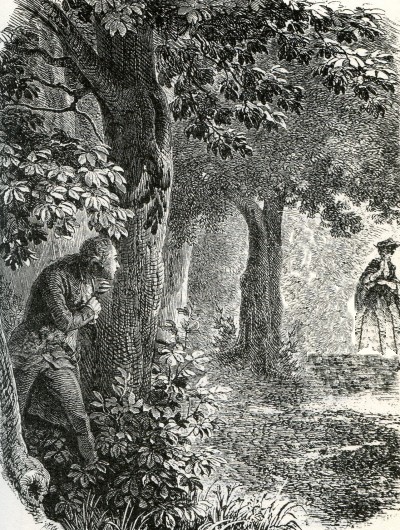
Jeanne
de la Motte whispers to Rohan to keep quiet as he hides
behind a tree.
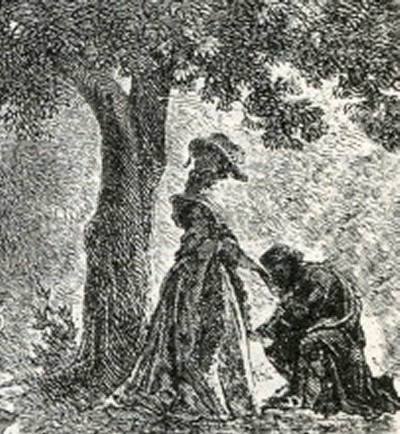
Rohan
kisses the hand of his Queen and weeps profusely.
|
| |
|
 |
Presenting the Countess Jeanne de la Motte-Valois
|
| |
|
Jeanne de la
Motte was quick to put the Cardinal's generosity to good use.
She improved her life style by renting a new apartment in
the best section of town. She purchased a new
carriage. Then she purchased expensive clothes and jewelry.
By spending her money wisely, LaMotte
was able to impress more people. She was determined to climb to
the highest levels
of French society.
To her
surprise, LaMotte discovered her old trick worked
just as well with the new people she met as her old
crowd. By openly boasting about her
close
relationship with the Queen, she accelerated her rise to the
top.
And why would
Jeanne de la Motte take a chance of being discovered?
One would assume
that during her rise in society, LaMotte would meet someone
who actually knew the Queen and be challenged, but that
never happened. Indeed, she met many gullible people who
mindlessly assumed
the relationship was genuine. Soon she had all
kinds of people convinced that LaMotte had a direct link to
the Queen.
LaMotte discovered that every time she
dropped the Queen's name, LaMotte was invited to another
party at a better estate. LaMotte was finally living
the life she had dreamt of back when she was an abandoned
child with an ounce of royal blood as her only gift.
She was
a con artist to be sure, but she definitely had
guts. If nothing else,
one must give La Motte credit for her brazenness because it
worked wonders.
Now,
suddenly, out of nowhere, her rash
claims unexpectedly led to a grand windfall.
The
Parisian jewelers Boehmer and Bassenge
were still desperate to unload that damn necklace. 13
years had passed! Worse, there was no end in
sight. In these depressed times, no one but the King had
that kind of money. But how to approach him?
So when they heard about LaMotte's
close connection with the Queen, they wondered if she could
help. So the jewelers approached
LaMotte to ask her help in selling their necklace to the
Queen. LaMotte smiled. Why certainly! She
would love to act as their intermediary... for a small price
of course... which they promptly paid.
After the men left,
LaMotte instructed
Rétaux de
Villette to construct a letter
on the finest gilt stationary fit for a queen.
It was time for "The Queen" to ask her newest best
friend the Cardinal for
his utmost discretion in handling an order to buy the
necklace. The letter was signed 'Marie Antoinette de
France'.
|
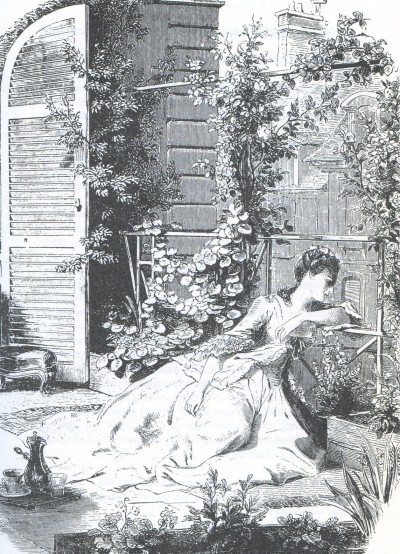
Thanks
to her incredible brazenness, Jeanne
de la Motte had finally achieved the life of luxury she had
always hoped for. Only one problem: she wanted more.
She obsessed with ways to succeed.
|
|
|
|
 |
The
Master Stroke
|
|
Madame de la Motte was a worrier by nature.
She knew she was taking an enormous
risk. It was one thing to bilk that buffoon
Rohan out of countless church dollars. If he
ever got wise to her, so what? He wouldn't
dream of calling the authorities.
If he
said a word, all she had to do was suggest the
Archbishop would be curious to know what Rohan had
been
doing with the Church's money.
Rohan
was the least of her problems. He could
be effortlessly blackmailed into silence.
However, this necklace scam could easily backfire.
One mistake and she could be in prison or worse.
Her worst fear was that Rohan would get wise to her.
But how likely was that? He didn't suspect a
thing.
La Motte
sighed. It was time for the 'le coup de maître', the master stroke.
On 21 January 1785, LaMotte
visited the
Cardinal at his residence. She handed him the fateful
letter "from the Queen" requesting his
help with the necklace. The Cardinal's
eyes grew wide as he read the contents. He couldn't
believe it. Marie Antoinette, the Queen
herself, had
authorized him to purchase the expensive necklace on
her behalf. Unbelievable.
|
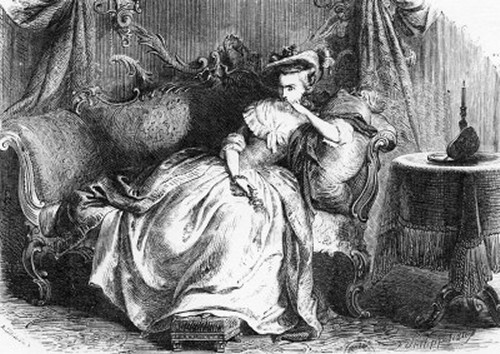
Madame de la Motte weighing the chances of success |
Rohan put
the letter down and asked Madame de la Motte to clarify what
was expected of him.
Jeanne de la Motte
explained that Marie Antoinette keenly wanted to buy the
necklace. However, Antoinette was fearful of any more
negative publicity. Not wishing to publicly purchase such an
expensive item during the country's time of need, the Queen
wanted her friend the Cardinal to act as a secret
intermediary. Knowing this action required the utmost
discretion, the Queen could only think of one man capable of
assisting her.
It was a lie,
but it was also a very plausible lie, especially to a vain buffoon like Rohan.
It never seemed to cross his mind why he of all the people
had been chosen to undertake such a sensitive mission.
Instead, he believed the Queen was right. Rohan was surely
the only man in France smart enough to pull off this
clandestine purchase.
Rohan stared at
the Queen's signature for a time. Little did the forgers
realize that the addition of "de France" had been a
mistake - French queens signed with their given names only.
Villette and LaMotte had no way of knowing this, but the
Cardinal should have known. Unlike LaMotte or Villette,
in his role as former ambassador to Austria, Rohan had actually seen stationary with
a royal signature on it. But Rohan wasn't
smart enough to catch the error. He was too busy
thinking of another meeting in the darkness with the Queen
and what that might entail.
Finally Rohan
nodded. This was his big chance to resurrect his
career. And what else? This was no ordinary
favor. Could this lead him into the arms of the most
sensational woman in all of France? His heart
pounded with his fantasies.
Rohan began to
nod. Yes, he would do this. Rohan told LaMotte he would be delighted to help and
agreed to be guarantor of the purchase from the jewelers,
Messieurs Boehmer and Bassenge.
Cardinal Rohan
got right to work. He visited the office of the
jewelers and claimed
to have the Queen's authorization for the purchase of the
valuable necklace. Then he
showed the jewelers the conditions of the bargain in the Queen's own handwriting.
The jewelers
were surprised, of course, but it didn't take long before
they began to smile. They were pleased. Very pleased.
Contacting LaMotte had been a shrewd move on their part.
They had been
stuck with this damn necklace for over thirteen years!!
Making this necklace had been the most foolish thing they
had ever done. Now finally they had a chance to unload
the cursed thing.
Little did the
jewelers suspect that the letter they were reading was a
forgery written by Villette. The letter was convincing
enough. In fact, it was quite convincing. The
words sounded exactly like the Queen!
|
So now the
jewelers bought the scam as well, especially since a man of
the cloth was involved. Swearing the men to absolute
secrecy and discretion, Cardinal Rohan negotiated the
purchase of the necklace for 2,000,000 livres, to be paid in
installments. Then he wrangled the release of the
diamonds from Böhmer and Bassenge on credit.
There is no
explanation why the jewelers trusted the Cardinal enough to
release the expensive necklace without even a down payment.
They must have been so befuddled by the extraordinary hush-hush
circumstances that they took leave of their senses.
Throughout this
story it never ceases to amaze what people can believe if it
just happens to be what they want to believe. The
Cardinal of course was the primary dupe, but Boehmer and
Bassenge bit on the same hook as well.
Now Rohan
took the necklace to LaMotte's apartment. Soon a well-dressed,
well-mannered gentleman came to fetch it. Rohan had
seen this man before at Versailles. In fact, he had
noticed him at the side of Countless LaMotte at least twice.
The gentleman
had exquisite manners. He bowed and introduced himself to Rohan as “Desclaux”, the Queen’s
confidential messenger and trusted valet. Without a
second thought, Rohan handed Villette the necklace.
The valet,
of course, was
none other than Rétaux de Villette, LaMotte's partner in crime. The necklace
never came anywhere near the Palace. Instead, Villette
quickly smuggled the necklace to London. Once there,
he had it broken into separate pieces to sell off the large
individual diamonds individually. The necklace was
never seen again.
|
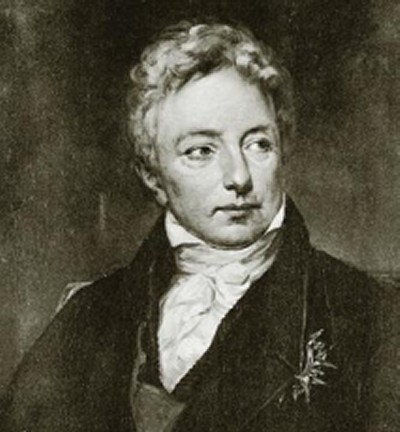
Rétaux
de Villette
|
 |
All
Hell Breaks Loose
|
| |
|
Incredibly, it took
over six months for the grand theft to come to light.
The sale was
made in February 1786 and the first payment was due on July 30.
Four-hundred thousand francs were due. The jewelers
had invested everything in obtaining the diamonds that made
up the necklace, which was said to equal the value of a
giant naval warship.
Boehmer and
Bassenge were already selling the necklace at a deep
discount. They needed the money on the agreed date in order
to meet their own debts. After 13 years of
frustration, one can imagine how anxious they were on July
30.
Recently Cardinal Rohan had received a new forged letter from "The
Queen" via Madame
de La Motte. Accompanying the letter was 30,000 francs.
Little did he know that LaMotte had sold some of her diamonds to generate this pittance.
Rohan's eyes grew large. This was not even one tenth of what was due!
The letter... as
usual in the Queen's beautiful handwriting... explained that "The
Queen" was
low on cash, but would catch up on the next payment.
Apparently even Queens have trouble paying bills. Rohan frowned when he saw how little money
had been sent, but at
least it was a start. What other choice did he have?
|

It may
be hard to believe, but the value of that necklace was said
by several different sources to be equivalent to one of
those naval ships.
|
| |
|
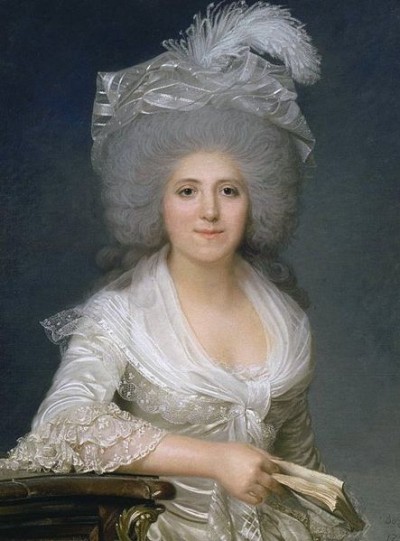
Madame
Henriette Campan, an intelligent, decent woman who was
Antoinette's lady in waiting and 'right hand man'.
It is
through her invaluable
Memoirs of the Private Life of Marie Antoinette
that we know so many details of Antoinette's life.
Indeed, her comments on the Necklace Affair have added to
this story immensely.
|
So Rohan
passed on the money to the jewelers. Boehmer and
Bassenge were insulted; they were due more than ten
times that amount. The irritated jewelers went to
Cardinal Rohan’s palace every day after that to harry him about
the payment.
Unfortunately for the gullible
Cardinal, he had signed as guarantor for “the
Queen’s” purchase, so he was responsible for the
expense. Imagine Rohan's distress when
no new money was forthcoming. Now he was
just as worried as the jewelers themselves.
Incredibly, La Motte's typically clever
stories about the Queen's financial difficulties
kept him from realizing the truth. He still
had no idea that the necklace was long gone.
The jewelers
were becoming frantic because they had received no
credible
explanation for the shortfall from either
the Queen or Rohan. Something wasn't right here.
Their
next move was to send a
letter of thanks to the Queen for the purchase. Their
note, of course, was actually a 'reminder' of sorts
to pay for the necklace.
Antoinette was perplexed
by the letter because she had nothing to do with the
purchase.
Unfortunately, in typical Antoinette fashion,
rather than investigate, she chose to ignore the strange
letter. Apparently she simply burned it; this was her
custom so discarded correspondence would not fall
into the wrong hands.
More time passed. Now the jewelers
waited to see the if the queen would wear their necklace in public,
but of course no such thing took place.
At this point, Boehmer lost his patience.
According to Madame Campan, Boehmer came to speak to
her and said that the Queen owed him money.
Campan insisted the Queen did not. Boehmer said it was for a
diamond necklace and that Cardinal Rohan had
acted as go-between for the purchase. Now Madame Campan
realized something was amiss. She told Boehmer
to go to Baron de Breteuil, Minister of the King’s
Household.
But
Boehmer ignored her and went to the Queen instead.
According to Madame Campan, the Queen lost her
temper at being bothered. She dismissed the jeweler
after he insisted that she owed him money
which she was sure she didn’t owe.
The next
day Madame
Campan learned about the jeweler's visit
to the Queen. Madame Campan told the Queen all she
had heard the other day about the diamond necklace
and Cardinal Rohan. The Queen simply stared at
Campan in confusion.
One can hardly blame her. The
jewelers had pressed her for years to buy this
necklace, which she had constantly refused to
purchase, and now they were telling her she had
bought it from them even though she hadn’t. How
could this be?
However,
now the Queen was finally alarmed enough to bring
the matter to the King.
|
|
|
|
|
On August 9, Boehmer and Bassenger
were brought to the Palace to explain themselves.
Now that
the jewelers realized Antoinette knew nothing, for the first
time they guessed that Rohan was behind this... and maybe
LaMotte as well.
Rohan was quickly summoned to
account for everything that had happened.
Deeply shaken, he finally understood how badly he
had been duped. As Rohan
explained what had transpired, Madame de La Motte’s plot to steal the necklace
finally came
to light. Except that Antoinette
did not believe him.
So
Rohan produced a
letter to prove his innocence. It was signed "Marie Antoinette
de France"
Upon reading this,
the King became furious. How could Rohan have been so
easily
fooled? Cardinal Rohan of all people should know that royalty do not use surnames
on signatures!
Antoinette
still didn't buy any of his explanation.
She thought he was the thief and the mastermind
behind the entire sordid affair. The
King agreed. He ordered Rohan arrested.
Rohan protested
mightily,
but his reasons were ignored. Now
even his family connections couldn’t help him.
|
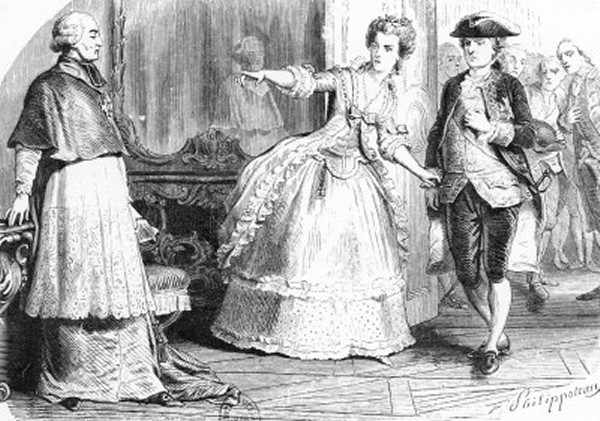
Antoinette points the finger; Cardinal Rohan's moment of
shame
|
Rohan was
arrested and taken to the Bastille; on the way he sent home
a note ordering the destruction of his romantic correspondence.
It would not look good to have the King or the public discover those
letters revealing his infatuation with the Queen.
LaMotte was arrested three days later.
She was in serious trouble.
[Note: No
explanation was uncovered explaining how LaMotte was
caught or why
LaMotte wasn't hiding in London by now.]
|
| |
|
 |
The Sensational
Trial
|
The king insisted on a full trial in
French Parliament to clear
the queen’s name. This would turn out to
be a serious
error in judgment. The king had the power to declare
his own ruling on the matter.
By keeping the necklace affair
quiet, scandal
would be avoided and any damage to the queen’s image
that followed.
But the case
went to trial instead. Not surprisingly, Jeanne de la
Motte did not fair very well. She was condemned to be
stripped naked and whipped to within an inch of her life.
Afterwards she
was
branded with a V (for voleuse, "thief") on each shoulder. No
more strapless gowns for her.
Then she was sent to life imprisonment in the prostitute
prison at Salpêtrière.
In June 1787 of the
following year, La Motte escaped from prison disguised as a boy.
She went to live in London and got her revenge by writing a
pretty nasty tell-all book. In her version, Antoinette
- no friend of hers - was painted as the bad guy.
Indeed,
Antoinette came out of this affair in very poor shape.
As we have read, Marie Antoinette
was completely blameless in the matter. But no one bothered to
let that inconvenient fact get in the way of their insidious
rumors.
|
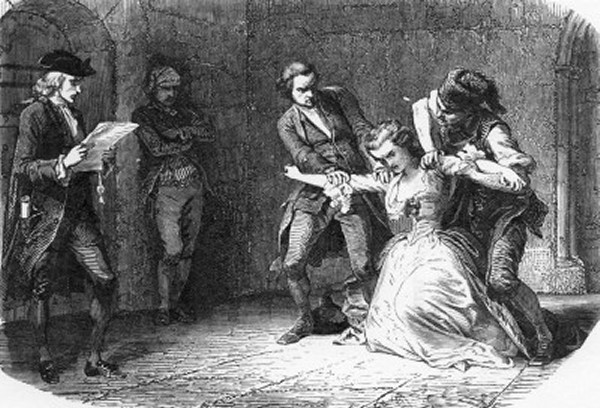
Madame
de la Motte being hauled off to jail
|
| |
|
 |
Lèse-majesté
|
| |
|
Lèse-majesté
is French for "injured majesty". In France, this was a term
for the crime of violating "majesty", i.e. an offense
against the dignity of a reigning sovereign. In simple
terms, it was a crime for people to say untrue things about
Kings and Queens.
At Rohan's
trial, after listening to the testimony of different
witnesses involving Rohan's behavior, it was obvious to
everyone that the man had indeed been duped. Rohan was
most certainly an idiot, but at the same time he had
committed no direct crime. After all, there is no law
against being stupid. Once all the facts had been
collected, Rohan was cleared of criminal behavior.
|
However, Rohan
faced one more charge - Lèse-majesté; disrespect
to the Queen.
This curious aspect of
Cardinal Rohan's trial hinged on whether the man had
offended Marie Antoinette's dignity or not. Surely it
was slanderous to assume the Queen would stoop so low as to
grant Rohan a midnight rendezvous alone in the garden.
Surely this act was totally beneath the dignity of her
Highness. The Queen had been insulted!
In other words,
Cardinal Rohan should have realized that the "willingness"
of the Queen to meet with him in the garden was all the
proof he
needed to know this was a set-up.
It was a
fascinating legal point indeed. The previous Queen
Marie Leszczynska was so highly respected throughout
the Kingdom that no one in their right mind would have ever
believed her capable of such an act. Had Queen Leszczynska offered to meet Rohan in the garden, he would
have known instantly this woman had to be an imposter.
But what about
Marie Antoinette? Was she capable of such an act?
Did Cardinal Rohan have the right to believe it was
"possible" for Queen Marie Antoinette to actually desire to
meet with him ALONE in the garden in total darkness?
If he was
guilty of anything, Rohan was guilty of having such a poor
opinion of Antoinette's morals that he deemed her capable of
behaving in this despicable way.
The charge was
that Rohan was guilty
of criminal audacity for presuming the Queen would
entrust him as an intermediary in the sale of the diamond
necklace. The
recommendation was that Cardinal Rohan be forced to give her a
public apology.
He was further
charged for his audacity in believing the Queen would meet
him at midnight in the palace gardens. If found
guilty, Rohan was to give special alms to the poor, to lose all of his many offices, and to be exiled from royal
residences for life.
After much debate, the vote was taken at 9 o’clock at night.
By the margin of 26 to 23, Cardinal Rohan was acquitted of
any slander. He was free to go.
|
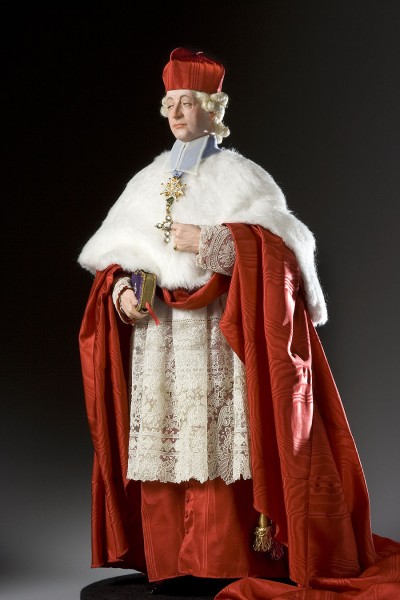 |
|
|
|
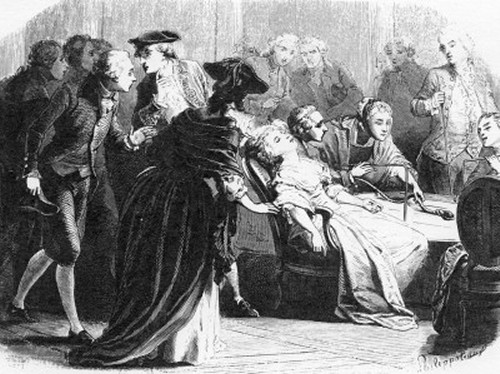
The
acquittal of her enemy Rohan was an enormous slap in the
face. After the verdict was read, Antoinette was very
upset. She collapsed in a sea of tears.
|
Antoinette was incredulous.
How was it
possible this idiot Rohan was found 'not guilty'? The
Queen was so distraught at the verdict that she fainted.
By not
convicting Rohan, these men were in essence impugning the Queen’s
honor. All illusion of
respect for the Queen was shattered.
By their way of
thinking, the Cardinal had not been out of his mind when he
thought he was meeting with her in the gardens of
Versailles; therefore the conclusion was that she was
morally loose, given to midnight rendezvous, and possibly
even involved in the theft of the diamond necklace even
though there was no proof suggesting she was.
It was a
terrible blow to her reputation, a blow from which she never
really did recover. It was a very bad sign that
the public was so quick to believe the worst of her and to
support this fool Cardinal Rohan. (No doubt Rohan's
move to burn the love letters had saved him).
The Parlement
was, in effect, saying that Marie Antoinette was widely
known to be dishonorable and had such a bad reputation that
the Cardinal was perfectly justified in believing he had
arranged a midnight rendezvous with none other than the Queen of
France. From this point on, all the nasty rumors and
tales floating around the Kingdom were given official
sanction.
This was a very
bad outcome for the Queen. Indeed, sensing immediately
the wide-ranging implications of the verdict, Antoinette
collapsed in tears.
|
| |
|
|
 |
Conclusion
to the Story
|
Rick
Archer's Note: It took me a long time to truly understand
why this necklace story had gripped me from the start.
•
There were
all kinds of lessons to be learned. For starters, one shocking
part of this story was the foolish credulity of a man who should
have known better. It is ridiculous to think a man of the
world like Cardinal Rohan, a former ambassador for crying out loud,
was so easily deceived thanks to his ambition and his pathetic male
ego. Just the thought that he actually had the nerve to
imagine Marie Antoinette was in love was him says it all.
It is chilling to see
how easily this man was fooled into believing what he wanted to
believe and seeing what he wanted to see. The Cardinal wanted to
believe he was back in the Queen’s favor. He wanted to see the Queen
there in the gardens, so that is what he saw.
In addition
there can be little doubt he actually entertained thoughts of a
possible sexual affair. Reality was warped by this filter of
his own ambitions and expectations.
•
On a personal
note, I was fascinated by how difficult it was to write this story.
On the one hand, the Internet is an incredible resource.
However, each person who wrote about the Necklace Affair had a
different version of what really happened.
1. As one example, one web
site had Rohan giving the rose to d'Oliva in the garden. I
eventually realized it was d'Oliva who gave the rose to Rohan
instead.
2. As another example, one
web site had the prostitute d'Oliva having sex with Rohan in the
garden... on several occasions! This seemed absurd. As
rotten as Madame de la Motte was, she was undeniably clever.
LaMotte would not dream of allowing d'Oliva to behave in any such way
that would diminish Rohan's respect for the Queen. Having the
fake Queen behave like a tawdry slut would certainly not advance the
purchase of the necklace. Nevertheless, some people... most
likely male writers... let their imagination get carried away.
3. A third contradiction
was whether King Louis XV asked the jewelers to make the necklace or
whether it was their own idea to make it in expectation that he
would likely buy it. I eventually settled on the
jewelers coming up with the idea on their own. That said, to
me the story would make more sense if King Louis XV initiated the
project himself. This was a tough call,
I hope the reader will
forgive any inaccuracies. Having to negotiate between a half-dozen
contradictions, I have to believe I missed the call on at least a
couple points. But please realize I did the best I could
to get it right. This story was so good I didn't have to add a
single piece of deliberate fiction to improve on it.
•
I
realized what I was really looking for was an "explanation".
The grisly execution of Louis XVI and his wife Marie Antoinette was
so repulsive to me that I had to wonder what on earth these people
had done to deserve such a horrible fate.
After studying the
Affair of the Necklace, I felt like I understood what really
happened to these two people. To me, they were victims of
circumstance. Like the people on the Titanic, they were doomed
by forces far larger than either person could control.
In the end, my
conclusion was that neither of the two did anything to deserve
having their heads chopped off. It may be funny to see the
angry Queen scream "off with their heads" in Disney's Alice in
Wonderland, but to see it happen in real life is very
disturbing.
•
I found that I was angry at myself for
spending the majority of my life believing that Marie
Antoinette had indeed uttered the immortal phrase "Let them
eat cake".
This story was
fed to me by my history teacher when I was at the
impressionable age of 14. Judging by the sincerity
with which he related the story to our class, I have no
doubt my teacher completely believed the story himself.
I suspect if 20
people on the street with any knowledge of Antoinette
were asked, at least 16 would say they believe she made the
statement. It would be interesting to ask.
I have come to the conclusion that well-placed lies and
propaganda have enormous power.
The simple truth
is that majority of us are nowhere near the people we read
and hear about through the media. We are completely
dependent on the accuracy of our news sources.
In addition,
most people are not trained to question everything they read
or hear.
I think the
American people are fed a steady stream of lies and
half-truths on a daily basis. Call it "propaganda".
But since few of us have any way to disprove what is being
said, these lies are able to develop a life of their own and
do vast damage.
This is the
lesson of Marie Antoinette, a woman who never grasped the
importance of public relations. By allowing the myths
about her to stand unchecked, she paid a huge price.
|

If
King Louis XVI had been more aggressive at punishing the
people who spread the lies, he and his wife would have
likely lived much longer.
|
•
My
final point deals with the danger of widespread public ignorance.
Call it the "Cassandra Principle". Cassandra was the
Trojan princess who stridently warned her people not to bring the
Trojan horse inside the walls of Troy. Her voice was drowned
out.
I have long
been fascinated with stories dealing with a public gone insane.
A prime example would have to be Nazi Germany. How was it
possible for all those Christian people to take total leave of their
senses and allow the barbaric behavior of their leaders?
And what about Salem
Village? Brought on by the lies of a hysterical teenage girl,
before the dust had cleared, 19 people were dead by the cruelest of
means (they were crushed to death by huge stones) and more than 200
people were unjustly accused of practicing witchcraft.
And now we have a King
executed in France for really nothing more than being overmatched
for the job. And a Queen was executed because she spent too
much money on clothes. What in the world were the French
people thinking?
As the French mob slowly
moved to Versailles, rumors of Antoinette orgies rocketed through
the crowd like wildfire. The mob was so angry at her they
nearly killed her in her own bedchambers the next morning. As
far as 'orgies' are concerned, I never read a word about a single
orgy.
So the death of the
Queen was a riddle to be solved. In the end, I got what I
wanted - the Queen died because she had little natural talent for
public relations. That's really what it boiled down to.
Antoinette went through
a bad phase in her early twenties. After being constantly
controlled and bossed around as a teenager, once she got old enough
to tell people to go to hell, Antoinette behaved much like our
modern bad boys and bad girls (Brittany, Miley, Justin, etc).
However, once she
matured, Antoinette became a decent person and a good mother.
Her flaw was that she lacked the sense or perhaps the skill to turn
her public image around.
I think the Necklace
Affair dealt her a crushing blow. Antoinette was confronted for
the first time with the truth of what the common people really thought about her... and she was
devastated to discover how miserable her public reputation was.
To Antoinette, it was
unthinkable that people would believe her capable of any
such tawdry behavior. But they did...
Now a sense of acute
pain came over her with the realization that the French people
believed their Queen was not only capable of meeting a man in the
dark at midnight, but was almost certain to do if given the chance.
This was in essence the ruling of the jury.
So what is the answer to
the enigma? Why did the plot to steal the necklace ultimately
hurt an innocent Queen and does the story help explain why the Queen
ended up losing her head? It appears that her public
reputation was mostly erroneous, but it also appears that Antoinette
had not the slightest clue how to repair the damage.
|
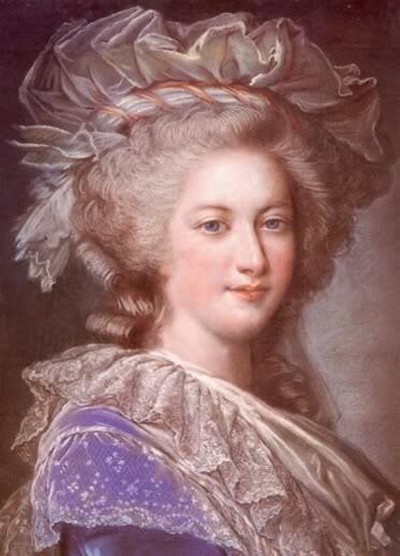 |
Even though Marie
Antoinette wasn’t on trial, the trial backfired on her nonetheless. Antoinette was
shocked to see her reputation inadvertently put to a public test and
shattered by the verdict. The public had judged her
a slut.
In the end, the Necklace
Affair led to a huge decline in the Queen's popularity.
It further reinforced her image among the masses as a
manipulative spendthrift, a frivolous "Madame Deficit"
interested more in her own vanity than the welfare of France.
Once a jury of her peers
- the men in Parliament - excused the Cardinal's behavior as
"justified", everybody in France realized they could say just about
anything they wanted to where Antoinette was concerned without fear
of consequences.
Now as Marie Antoinette
became even more unpopular, the intensity of the malicious gossip about her
increased. If people in the street accused her of
telling the starving to eat bread crumbs off the ground, then
undoubtedly most of the French public automatically assumed the
story was true even when it wasn't.
And when the firebrands
inflamed the Versailles mob with lies about orgies, the Necklace
Affair verdict had ruined her reputation so badly that these lies
grew in power like an out of control fire. The instigators
manipulated the truth at every turn to inflame the mob.
I can imagine that
Antoinette must have felt very bitter at the way people talked about
her. In the public mind, in the Necklace Affair, Marie Antoinette was 'convicted' of
disgracing her royal position... even though she never did a single
thing wrong in the strange situation that put her reputation up for
public debate.
Let her mistake be a
warning to all of us - a person's reputation has great value.
Once it is lost, it is very difficult to resurrect.
|
|
|
|
|
|
|
Antoinette's Fateful Mistake
|
|
The flight to
Varennes during the night of 20/21 June 1791 was a
significant episode in the French Revolution. With her
close brush with death at the Versailles Palace always in
the back of her mind, Marie Antoinette feared for the safety
of her children as well herself and the king.
After two years
of imprisonment, King Louis XVI of France, his wife, and their immediate family decided to make a run
for it. They attempted to escape from Paris in order
to initiate a counter-revolution from abroad.
They wanted to
go to Austria, Marie Antoinette's homeland, where they hoped to find safety.
The queen’s
friend and rumored lover Axel Fersen used his own money to
arrange the needed coach, assumed identity papers and escape
plans.
The royal couple
with their children disguised themselves as common travelers
and escaped from Paris at midnight.
The king and queen
were not very smart about their escape. By refusing to be separated from her children, they all had
to travel in a single cumbersome carriage, rather than
several smaller versions, attracting more attention. Had
they separated, there is little doubt their chance of
success would have been far greater.
They insisted that
they travel with all comforts which made their
coach lumbering and slow. Not only would the large
coach attract attention, it would require a change of horses
midway.
The plan should
have worked. By traveling in disguise, once they made
it out of Paris, they were in the clear. No one had a clue what the Royal family actually
looked like. There was no television and no magazines
to
plaster the likeness of these people across the country.
The coach
reached Sainte-Menehould as the sun set and men were
returning from the fields to the little town. The
arrival of such a fine carriage caused a pleasant stir in
the village.
The coach had
stopped here to change horses. Just then a young
ex-dragoon named Jacques Drouet, the village postmaster,
walked up and offered to help. By chance, Drouet's father was
in charge of
providing horses for the next stage of the journey.
So Drouet
pitched in to help his father.
Drouet noticed an attractive woman who was dressed in
peasant clothes. Except that she didn't handle herself
like a peasant woman.
Drouet thought
it was strange to see a peasant issuing orders in a voice that assumed the
orders would be followed by a noble woman. In fact, the
more he watched, the more he was convinced the peasant woman was the one
really in charge.
The combination
of the fine coach and the lowly
peasant woman behaving as boss rather than as a maid made
him very suspicious. Indeed, Antoinette was dressed as
a peasant and Madame Campan was dressed as a noble woman,
but Antoinette had forgotten to stay within her role.
By chance, Drouet had just been given a gold piece as a tip.
He put the gold piece in the light and compared the face on
the coin to the quiet, nondescript man sitting in the
carriage. Drouet noticed a resemblance. He was almost
sure this was the king.
The coach was
just now pulling out when Drouet reached his dramatic
conclusion. Drouet quickly rounded up some
friends. Together they got on horses and sped past the coach
to reach the small town
of Varennes up ahead. There they alerted the people to confront the king and queen on arrival.
Upon their
capture, the royal family had travelled over 200 miles.
Even with all the mistakes they had made, they had almost
succeeded.
The family was caught only 30 miles from
the French-Austrian border where loyal troops were waiting
to rescue them and take them to safety at the heavily
fortified royalist citadel of Montmédy.
The humiliated
king and queen were forced to return to Paris over dusty
roads over the course of the next four days.
Frenchmen came
from near and far to gaze and glare at the famous captives,
on several occasions almost assaulting them. Later members
of the assembly arrived and crowded into the coach with
them.
When they arrived in Paris, they were met complete silence.
All men kept their hats on. There were no salutes nor
any other sign of deference to the king.
|

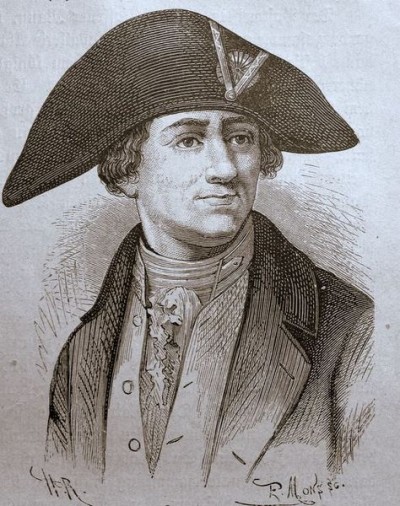
Jacques
Drouet
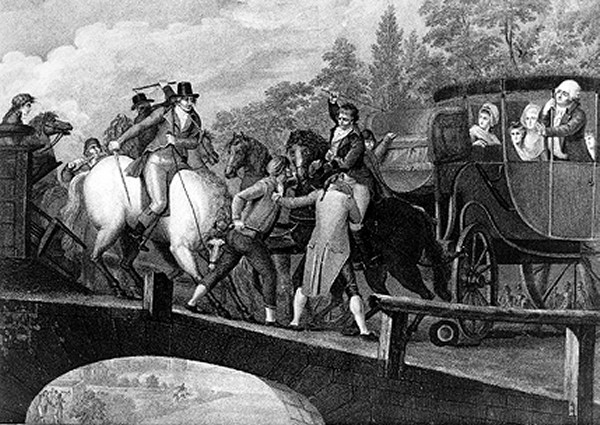
The coach
being stopped at the outskirts of Varennes
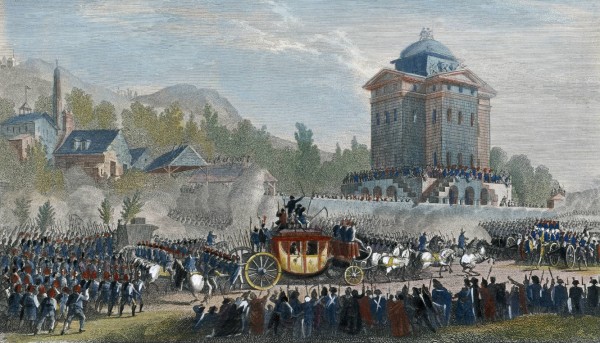
The royal
coach being escorted back to Paris
|
The weary
travelers were caked in dust and sweat. As Madame
Campan drew the bath for the Queen, both women noticed
the Queen’s blonde hair had turned completely white from
the fright and torment of the journey.
This incident was a huge turning point.
The king's
flight was traumatic for France. It incited a wave of
emotions that ranged from anxiety to violence to full-scale
panic. The realization that the king had in fact
opposed the revolution was a great shock for the people.
Up till now, the
people had seen Louis XVI as a good king who governed as a
manifestation of God's will.
Now they felt
betrayed. This attempt at escape made them believe the
King had no intention of reform. This gave rise to intense hostility towards
the French monarchy as an institution and towards
the king and queen as individuals.
So why did they
flee? Apparently it was Marie Antoinette's decision.
Her fear for the safety of her children made her desperate
to get out of this horrible country while they still could.
This mistake
had sealed their fate. There would be no sympathy.
It would cost the King and Queen their heads.
|

This
dramatic pictures shows Marie Antoinette dressed in peasant
clothes and Madame Campan as the noble woman with King Louis
behind her. Antoinette is sobbing after being caught at Varennes
and taken into custody.
Sad to say, but if Antoinette had just
used some sense, the escape would have
succeeded.
|
 |
|
|
|
Not
surprisingly, Costigan saved
some of his best yarns for Louis XVI, the French king whose
1793 beheading before an angry mob was perhaps the most
ignominious royal death in history.
Costigan
explained that at least 15,000 French noblemen and some women as
well had lost their heads during the seismic upheaval of the
French Revolution.
I checked him
out and discovered he was right. One source said the
death toll by guillotine was estimated at 16,600 people
during the Reign of Terror (5 September 1793 – 28
July 1794).
Furthermore, the guillotine wasn't the only method of
execution in use during that time. A further 25,000 to
40,000 (obviously a rough estimate) were executed in France
during the same period. Most were simply arrested and killed
on the spot. People were drowned, shot, hung, whatever was
convenient at the time.
However, there
could be no question that the guillotine became the official
symbol of the French Revolution.
The French
Revolution (1789-1799) was a ten year bloodbath that
mercifully ended when Napoleon made his legendary coup
(Napoleon is a story best left for another time).
One could trace
the problems in France backwards to abuses of power by
any number of kings, but the Bourbon family was the direct
cause. To be honest, the only thing that saved the
family as long as it did was the notion that French
kings were divinely appointed. However, things got so
bad that even divinity could not save Louis XVI.
Starting with Louis XIV, the Sun King,
who raided
the treasury for Versailles, and Louis XV who emptied the
treasury fighting the futile Seven Years War, and Louis XVI
who bankrupted the country, the point had come when
France simply couldn't afford to keep these wasteful kings
around any longer.
Most
historians agree it was clearly the American Revolution
that unintentionally provoked the French Revolution.
Contact
between American revolutionaries and the French troops
who served as anti-British mercenaries in North America
had led to revolutionary ideals being spread from
America back to the
French people after the soldiers returned home.
A growing
number of the French citizenry had absorbed the ideas of
"equality" and "freedom of the individual" as presented
by Voltaire, Jean-Jacques Rousseau, Denis Diderot and
other philosophers and social theorists of the
Enlightenment.
The American Revolution demonstrated that
it was plausible for Enlightenment ideas - democratic
ways to organize a
government - to actually be put into
practice.
Ominously,
the French people had watched the American independence
effort perhaps a little too keenly. Thanks to George
Washington declining the offer to be made King, the
Americans made it clear they wanted nothing to with
monarchy.
Some
American diplomats, like Benjamin Franklin and Thomas
Jefferson, had spent a great deal of time living in
Paris where they consorted freely with the French
intellectual class. How ironic it must have been for Louis XVI to read
Benjamin Franklin's pro-democracy/anti-monarchy
statements revealed in the press and in the
conversations of Parisian philosophers.
Wasn't this the same Franklin guy who had come to him
begging for money? He was definitely singing a different
tune now.
The king's
attempted flight had been a costly, risky mistake. It provoked the charges of treason which
ultimately led to his execution on 21 January 1793.
As Louis XVI
mounted the scaffold, he appeared dignified and
resigned. He delivered a short speech in which he
reasserted his innocence ("I pardon those who are the
cause of my death.... ")
He declared himself innocent of the crimes he was
accused of, praying that his blood would not fall back
on France.
Once Louis XVI
was dead, a terrible door had just been opened.
Now the French people began toying with
dangerous thoughts.
The word Liberté was being
whispered across the realm. If the Americans could
revolt, why not the French? If the Americans could be
independent of the Crown, why not the French?
The king’s death seemed to make people believe that
mass murder was acceptable. Michelet argued that the death of the
king would lead to the acceptance of violence as a tool
for happiness.
"If we accept the
proposition that one person can be sacrificed for
the happiness of the many, it will soon be
demonstrated that two or three or more could also be
sacrificed for the happiness of the many. Little by
little, we will find reasons for sacrificing the
many for the happiness of the many, and we will
think it was a bargain."
Thanks to
that dubious reasoning, 40,000 would be murdered.
Costigan said it was radical thoughts like these, of
course, that led to the bloody French Revolution of
1789. He added there was only one possible explanation for the
ensuing
blood bath.
The French people were so bitter and so angry at
their rulers that the only thing on their mind was revenge
and bloodlust against their oppressors.
At this
point, Costigan concluded his French history lesson with
a bemused smile. He said,
"Versailles is the story of four men named Louis.
Louis
the Thirteenth bought it, Louis
the Fourteenth built it, Louis the Fifteenth enjoyed
it, and Louis the Sixteenth paid for it. And that's all you really need to know to
understand the French Revolution."
|
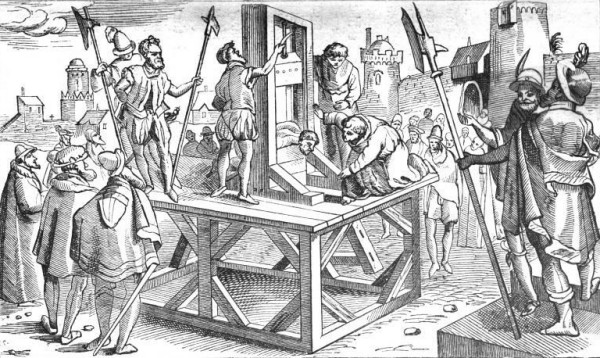
Behold le
guillotine, the macabre symbol of the French Revolution
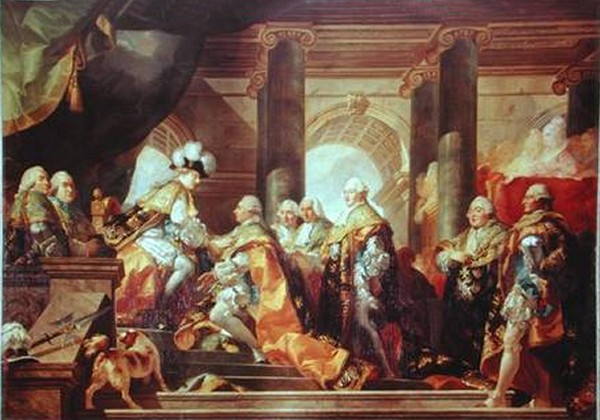
This
portrait was made after the coronation at Reims. It
shows Louis Philippe, the Duke d'Orléans swearing allegiance
as 'Chevalier du Saint esprit' to Louis XVI.
Life
is ironic. First the Duke swore allegiance, then later
voted to send him to the scaffold. And the irony
doesn't stop there. In the
zealotry to stamp out all
royalty, Louis Philippe was seized on the flimsiest of
grounds, then tried and executed the same day by the same
people he had once helped. France was a dangerous
place.
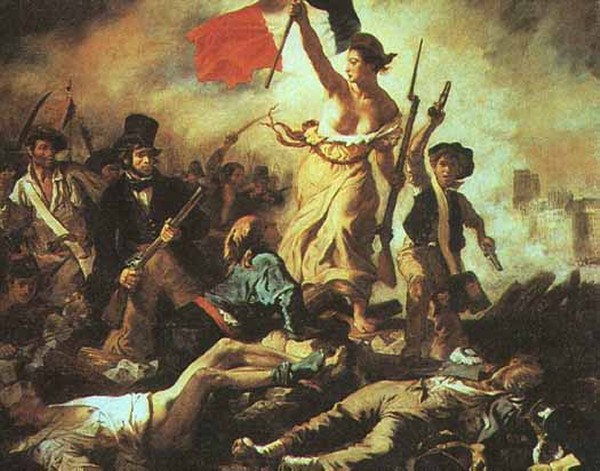
Liberty
Leading the People
The famous painting of the Revolution by Eugène Delacroix
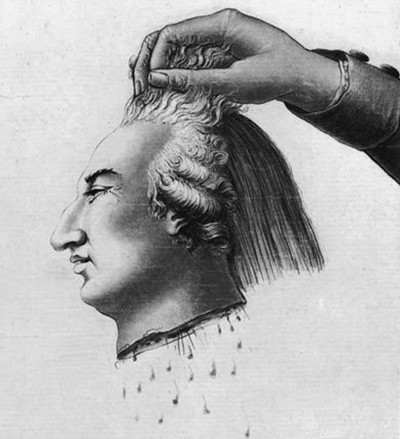
After
Louis' death, the executioner lifted his head high for the
crowds to see
|
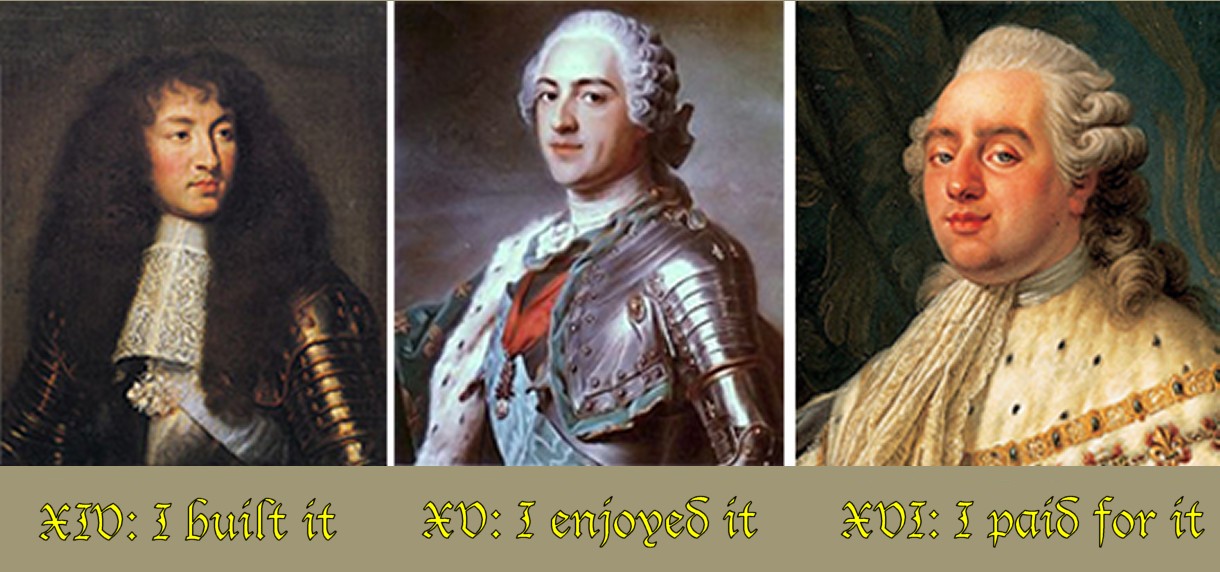
The
Sad Fate of Marie Antoinette
|
| |
|
As for Marie Antoinette, Costigan,
our Versailles guide, was very definite in his opinion that she was
a victim, a sad figure trapped in one of the
most horrible eras of history.
He categorically denied that
the French Queen had ever spoken the infamous callous remark
"Let them eat cake" in response to a report that the French
people were starving.
Since the young
queen was known to be quite tender-hearted, it is likely
these words were surely made up by zealots trying to find
some way to excuse their abominable execution of this
hapless woman.
Costigan explained that Marie Antoinette never did a single
thing to deserve the cruelty that was inflicted upon her.
Yes, Marie was sheltered and
inexperienced. Yes, she was silly, superficial and
frivolous. She was also incredibly lonely in her adopted
land and spent most of her time in refuge hiding at her
small estate Trianon on the edge of the Palace grounds.
Marie Antoinette was guilty of only two things - she was a
foreigner (Austrian) and she was married to Louis XVI, who
was almost as much a victim of circumstances as she was.
Let's face it, the French mob was so hateful that they
demanded a scapegoat. Marie Antoinette, the friendless,
naive foreign girl, was the perfect target.
1793 was Antoinette's
final year. Her beloved husband Louis XVI had appeared
before the tribunal and been executed. Soon it would be Marie’s turn.
Costigan
mentioned that her confinement and eventual trial was horrible. So I looked it up.
Sure enough, they roughed her up pretty badly. The
cruelest thing they could do was take her children away.
And that's exactly what they did.
After her husband’s
death, in July 1793, Marie Antoinette’s son was forcibly taken
from her. The poor woman begged that her son be allowed to stay
with her. But she was powerless to change the will of the ministers. The
boy was put under the care of Simon, a cobbler. The child died of
neglect within two years.
In September 1793, Marie Antoinette was separated from her
daughter and sister in law as well. Now called “Widow Capet”, Marie was
transferred to months of solitary confinement in the dank Conciergerie prison.
She was put under twenty-four hour guard
by revolutionaries who watched her every move. No one
wanted her to commit suicide and deprive the citizens of the
upcoming spectacle.
The Conciergerie
prison was a form of living death. In this dank prison, she
lost much weight and her eyesight began to fail. Recurring blood
stains on her undergarments suggest she may have been dying
of uterine cancer while she awaited her fate. Shortly before
her execution, she had been hemorrhaging for days.
Undoubtedly the woman was in pain from her disease.
On October 14, the poor pallid woman was awoken at night and
forced to face the Revolutionary Tribunal. The trial was a horror, with
the Queen attacked more as a person than as a queen.
Antoinette was accused of orchestrating
orgies in Versailles, sending millions upon millions of
treasury money to Austria, plotting to kill the Duke of Orléans, declaring her son to be the new king of France
without their permission, and orchestrating the massacre of
the Swiss Guards in 1792. They even forced her own son
was forced to testify that she had abused him.
The queen bravely
replied to all these outlandish charges. None of the
accusations were true, not even a little bit.
However, the
accusation that she had sex with her son was beyond cruel.
That took Antoinette's breath away. She could not
believe they would stoop so low to accuse her of having
incest with her son. When she was able to recover,
Antoinette stared grimly at her accusers and said,
“If I make no
reply, it is because I cannot. I appeal to all mothers in this
audience - is it true??”
Shortly before
Marie-Antoinette’s execution, the topic of Madame de La
Motte was brought up by Public Prosecutor Fouquier-Tinville:
Question:
Was it not at the Petit Trianon that you knew the woman
La Motte?
Answer: I have never seen her.
Question: Was she not your victim in the famous
affair of the diamond necklace?
Answer: She cannot have been, since I did not know her.
Question: Then you persist in your system of
denial?
Answer: I have no system of denial. It is the truth I
have spoken and will persist in speaking.
This line of
questioning makes it clear that there was little attempt to
get to the truth of any of the many rumors.
She was found guilty of treason two days later and was
immediately condemned to death on October 15.
When Antoinette left the courtroom after her
pathetic pretense of a
trial, people were shocked at her appearance. She was
emaciated, prematurely aged, exhausted and care-worn.
I found the story of the Queen's execution very
disturbing.
On the following morning the hooded executioner arrived to
shear Marie Antoinette's beloved locks to allow for a quick,
clean cut of his guillotine blade.
One hour later at 11 am a guard entered her cell and forced
her to strip and put on a soiled white peasant's dress. Then
he tied her hands behind her back. Antoinette protested; her
husband had not had his hands bound. But her protests fell
on deaf ears.
Then Antoinette was forced into
an oxcart and paraded slowly
through the streets of Paris for over an hour. This journey
was made unnecessarily long to make sure everyone in the
city had a chance to witness her agony.
Throughout her
journey she faced all kinds of abuse. Some blocks were
eerie in their silence. Other blocks saw a jeering, hostile mob that shook their
fists and spit on her. Some threw rocks, other screamed curses at her and
called her unimaginable names.
The entire time Antoinette simply stared forward
expressionless. The woman was in shock. What else could she
do? No friend was allowed at her side. She had to face this
ordeal completely alone. One can only imagine what ran
through her mind as she passed this angry gauntlet of
sub-humans with faces full of hate and contempt.
There were
thousands in attendance. Many were of die hard French women who had already
witnessed many executions. They were so used to this
spectacle now that brought along their knitting to deal with
the boredom of waiting.
At 12:15 Marie Antoinette was led up onto the scaffold.
While climbing the scaffold, the weak and exhausted woman lost her balance and accidentally stepped on the foot of
Henri Sanson, her executioner.
Apparently the last
words Marie Antoinette ever uttered were "Pardon me sir, I
meant not to do it".
Then she had her
head placed on the block. Moments later she was dead.
The executioner had wasted no time.
Moments after cutting her head off, Sanson reached down to
pick it up by the scruffy hair. He then lifted the mutilated
head up high for the mob of 30,000 screaming nutcases to
view.
Many French
revolutionaries were ecstatic to bid the extravagant queen adieu
forever. After the blade came down, the executioner brandished
Marie Antoinette's head in a triumphant wave so that the entire
crowd could see it.
As blood dripped from her head to the stage, the
joyous crowd cheered, "Vive la nation!"
Yet for the thousands of people gathered to watch the scene, it
was a disappointment. They'd wanted to see the 38-year-old woman
quake in fear and cower penitently.
A well-known 18th-century
journalist and revolutionary, Jacques Hébert, wrote in the
newspaper that Antoinette was "bold and impudent to the very
end"
Despite the fact that the
executioner had cut off all her hair and ordered her to don a
threadbare white shift, she maintained her composure.
Now Antoinette's lifeless, headless body was then taken and
dumped in an unmarked mass grave in the Rue d'Anjou.
What a repulsive story. To be honest, as I was growing up, I
had always assumed the story of Marie Antoinette and her
"let them eat cake" statement was the gospel truth. Now
after researching the Marie Antoinette
story, I came away convinced that the woman was far more
worthy of my sympathy than my enmity.
Isn't it amazing how easily the truth can become twisted?
That is the interesting thing about travel. Wherever
I go, I learn something new or I hear a version
of something that totally conflicts with my previous
understanding. Indeed, my trip to Versailles
completely reversed my attitude towards Marie Antoinette.
Her detractors argue that while
Antoinette had very little say in the
conditions of her life, she certainly could have lived her days
at court in a fashion more befitting the queen of a nation on
the cusp of revolution.
Maybe so.
But was that any reason to murder her?
|
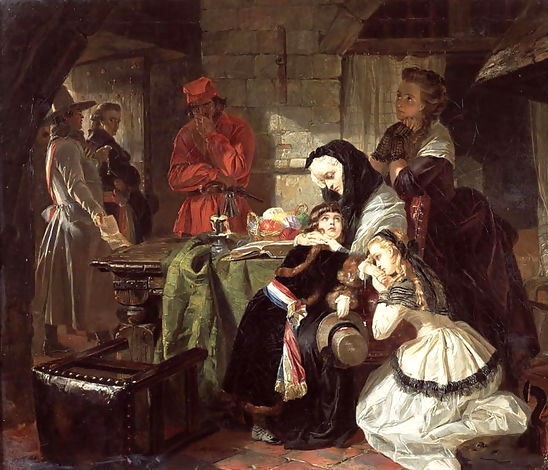
Antoinette says goodbye to her son
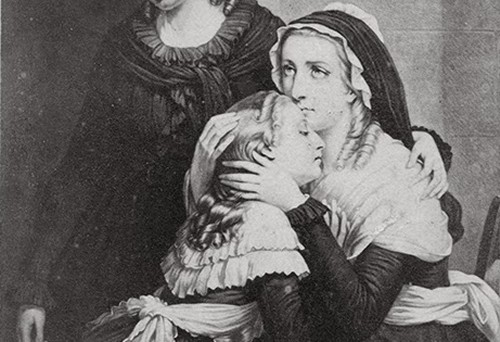
Now
her daughter is forced to leave
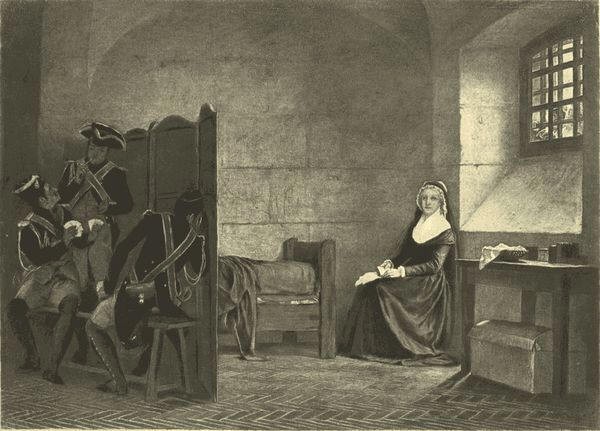
Antoinette on "Death Watch"
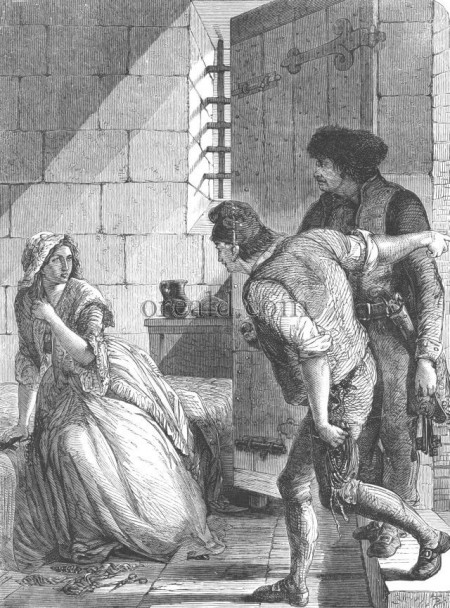
Antoinette is awakened to begin her trial. She was
given no warning
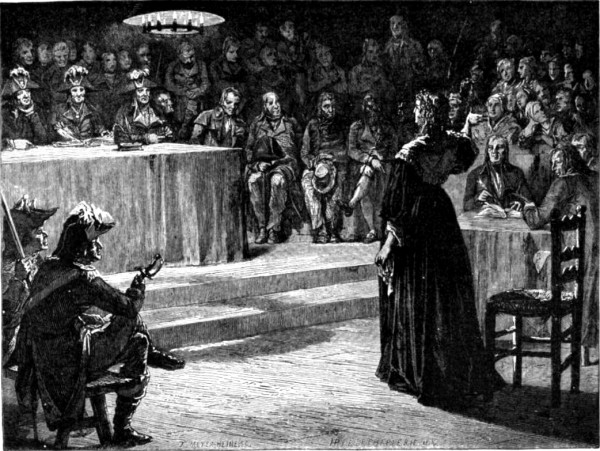
If I
make no reply, it is because I cannot. I appeal to all
mothers in this audience - is it true??”
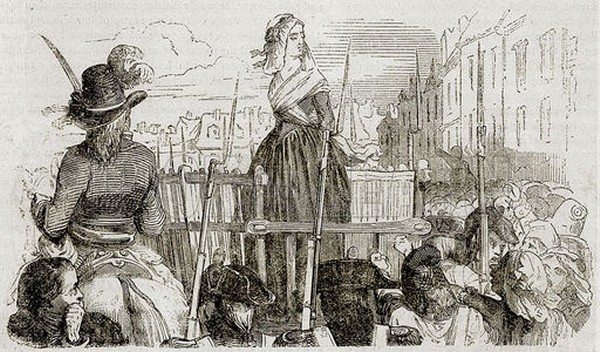
The
miserable ride to the scaffold
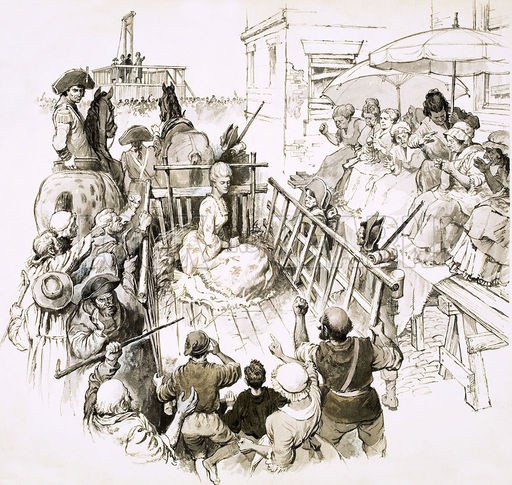
Personally, I find it difficult not to feel sorry for the woman. |
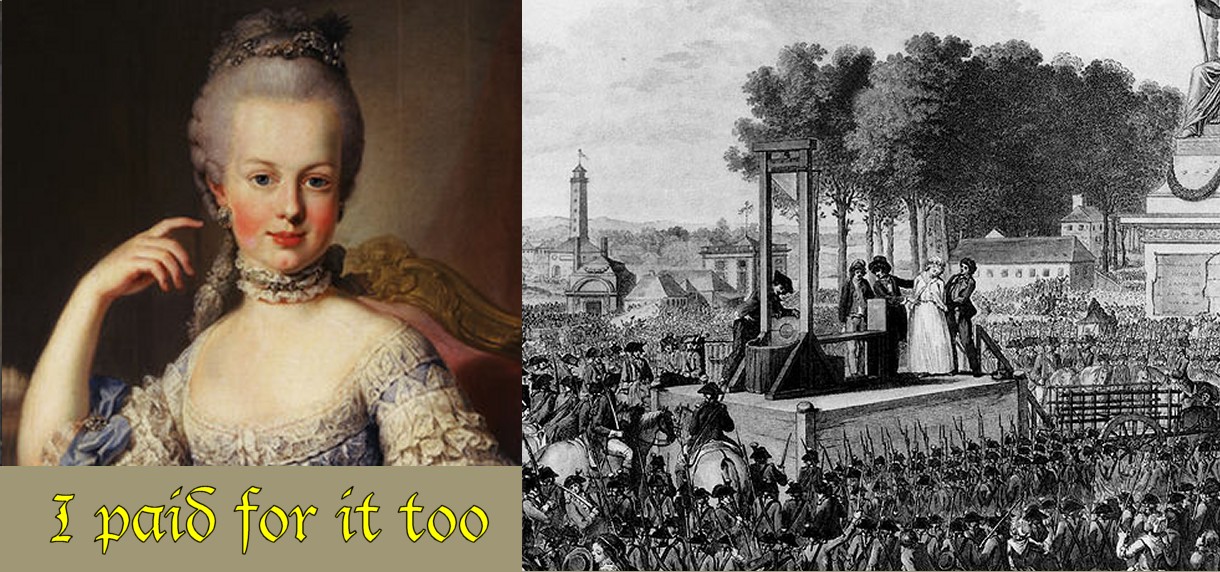 |
| |
|
|